This chapter-length article was written for an academic book, but with the intelligent lay reader in mind. Therefore, fear not: it is not stuffy! It centers on a true story. It is also laden with photos, all of which are my work unless otherwise noted. I hope you will find it interesting.
I offer Mahalo Nui Loa [greatest thanks, gratitude, and respect] to all of the Hawaiian people whose words and insights informed this paper, and to the spirit of the āina.
*
**************************************************
*
Kumu Pohaku (Stones as Teachers):
Awakening to the Spiritual Dimension of Ecosystems
by Tina R. Fields
***
Abstract
The indigenous Hawaiian concept that one must maintain correct behavior toward pohaku [stones] or risk supernatural retribution is explored in this chapter through participant-observation/grounded theory exploration of the experiences of an undergraduate student group living one semester on the Big Island, brief narrative interviews with local residents, and historical inquiry into native Hawaiian views about pohaku. After exposure to native stories heard in conjunction with uncanny animistic experiences, students’, locals’, and vacationers’ relationships with the land and its manifestation as the volcano goddess Pele became altered toward more respectful attitudes, a sense of spiritual import in the everyday, and more ecologically sustainable behavior.
Just as human consciousness influences behavior and our behavior in turn obviously affects the land, simultaneously the land itself may subtly, yet strongly, influence human consciousness. The pohaku phenomenon opens questions about the influence of story on belief and behavior, the potential for nonhumans to serve as teachers of proper ecological relationship, and how land itself might influence human consciousness. Together, these inquiries can lead to a shift in relational stance from the current paradigm of ownership to a more indigenous stance of belonging. This shift of consciousness carries with it strong practical implications for our long-term survival as a species.
Introduction
E Pele e Pele ka‘u ka‘u i‘ana E Pele e Pele a‘o kuli pe‘e nui
E Pele e Pele hua‘ina hua‘ina Ha‘ina ka inoa no Pele la ea
E Pele e Pele ‘oni luna ‘oni luna Ea la ea la ea a i e
E Pele e Pele ‘oni lalo ‘oni lalo He Inoa no Pele.[1]
This ancient Hawaiian following oli mele [sacred chant], E Pele E,both honors the force that is Pele and illustrates how natural and cultural history, in this case science and spirituality, are intricately and inextricably interwoven in Hawai‘i. Traditionally sung fast and percussive by one person with an ipu [ceremonial gourd-drum], it describes the volcano goddess Pele’s long search for a home. To summarize: “She traveled, bursting, moving upwards and downwards, until finding a suitable home in Halema‘uma‘u, in Kilauea crater, on the Big Island of Hawai‘i.”
It is equivalent to a song one might sing in church on the U.S. mainland, honoring part of the deity’s life story. Interestingly, it also accurately describes the path of volcanic action that created the island chain. Kilauea is the youngest volcano in the Hawaiian island chain, and is still active today. If you go there, you may be fortunate enough to witness new land being born, a sight to strike awe in the most hardened traveler.
 Although sometimes at odds, especially when the question of land use comes up, in Hawai‘i the two lenses of “myth” and “science” complement one another in a way quite unusual in a post-industrialized society. For example, geologists at the Big Island’s Hawai‘i Volcanoes National Park are seeking out kupuna [elders] who know these chants, in order to learn more about events in the island’s volcanic prehistory[2]—a fine case of big-tent epistemology. This orally transmitted knowledge has been kept alive as art, religion, and genealogy, but it also contains priceless details of natural history.
Although sometimes at odds, especially when the question of land use comes up, in Hawai‘i the two lenses of “myth” and “science” complement one another in a way quite unusual in a post-industrialized society. For example, geologists at the Big Island’s Hawai‘i Volcanoes National Park are seeking out kupuna [elders] who know these chants, in order to learn more about events in the island’s volcanic prehistory[2]—a fine case of big-tent epistemology. This orally transmitted knowledge has been kept alive as art, religion, and genealogy, but it also contains priceless details of natural history.
Note that I do not use the term genealogy lightly. As senior park ranger Terry Reveira notes, “Pele is not considered an abstraction.”[3] Besides being a deity, Pele was likely the name of one of the original Polynesian immigrants to the Hawaiian islands. Some natives reckon their bloodlines to come directly from deified beings like Pele, not distinguishing any difference between the flesh-and-blood woman and the volcano goddess; and many more Hawaiians consider certain nonhuman beings in the environment to be their immediate ancestral-spirit relations, their aumakua (see Kamakau 1866; Kane 1996).In every way, this island is far from inanimate.
Cultural stories such as these, describing relationships between humans and nonhumans, carry ancient knowledge still relevant to us today, and can also serve as a bridge between contemporary scientific inquiry and deeply embedded animistic spiritual sensibilities. This chapter investigates the intersection between cultural story and ecological relationship. I describe a series of interactions between dominant, inanimistic and native, animistic cultural worldviews, then demonstrate how experiential encounters between the two paradigms can catalyze transformation in the dominant, toward more cross-cultural respect and ecological awareness.
A mini-case study of consciousness transformation in my own class serves as the first major pillar of this chapter. Here I draw from my three years’ work as a college teacher on the Big Island of Hawai‘i for Lesley University’s field-based Audubon Expedition Institute. The second section draws upon independent research conducted simultaneously with the field-based teaching. It consists of semi-structured interviews with native and other Hawaiians, inquiry into historical native beliefs and practices, participant-observation in some of these as practiced today, and observations of interactions between my student groups and local people, beliefs, and practices. Finally, I describe what happens then these two paradigms, colonial modernity and indigenous animism, contact each other, and explore various implications.
The pohaku [stone] phenomenon I describe opens four arenae for questioning: the influence of story on belief and behavior, the potential for nonhumans to serve as teachers of proper ecological relationship, the ways land itself might influence human consciousness, and the locus of consciousness itself. Together, these offer a shift in relational stance toward land from the current paradigm of ownership to a more indigenous stance of belonging. This shift of consciousness carries with it strong practical implications for our long-term survival as a species.
*
A Semester in Hawai‘i: Jerry’s Story
I traveled to Moku o Hawai‘i [The Big Island] for three years to teach environmental and cultural studies for Lesley University’s Audubon Expedition Institute. The Big Island is a perfect place to teach these subjects, as the majority of the world’s ecosystems can be found right there. Further, in many ways this island is experiencing every issue that the earth as a whole is, albeit on a much smaller, more observable scale. Because of these qualities, my teaching partner Brian Johnson and I entitled our field semester “Microcosm of Earth: Interpreting Hawai‘i’s Environmental and Cultural Stories.”
The course of study included such aspects of traditional Hawaiian culture as rudiments of language; pre-colonial techniques of building, food, clothing, and land division; spirituality; myth; story; politics; dance; and song.
Thus we learned of kapu [taboos or prohibitions]against certain behaviors in Hawai‘i. For example, lava stones are seen as the volcano goddess Pele’s children—and similarly, sand is seen as “baby stones.” It is therefore considered kapu to take any sand or stones off the island. Very bad luck is said to follow anyone who does this, as the act is tantamount to kidnapping Pele’s children.
Limited Cultural Perspective
Among our students one year was a young man named Jerry.[4] He was extremely athletic, but not too strong in academics. He was only sixteen years old, the youngest student on the program, and also the youngest of ten children in a fundamentalist Christian family. Jerry was stuck in what anthropologist Lisa Faithorn (1992, 23–7) calls a “cultural perspective,” as opposed to an “intercultural” or “transcultural perspective” that allows for, and even enjoys, more diversity. Cultural psychologist Janet LeValley characterizes the cultural perspective as
…a me or you approach, characterized by judgment and repression of diversity, ethnocentricity, protection of one’s boundaries, expansion of one’s territory, with a conservative emphasis on the status quo….An individual who sees only his own perspective as having relevance is maintaining this cultural stance.[5]
Jerry’s cultural perspective became apparent when the students were learning about native Hawaiian beliefs and early mythological stories. The subject of respectful treatment of the land appeared repeatedly in these stories, especially those related to Pele. The volcano goddess Pele is reputed to be a kupua [shapeshifter],appearing in many guises including a beautiful young woman, a decrepit old woman hitchhiking along a road, and the flames erupting from the volcano. Her hair can be found in glassine form in the calderas, or in the lava form known as pahoehoe.[6] Offerings are still made to Pele today by Hawaiian pilgrims to Halema‘uma‘u Crater, a calmer part of the active volcano Kilauea on the Big Island that is reputed to be Pele’s most recently selected home (Kamakau 1866; U.S. Army Corps of Engineers [USACE] 1980; my own observations of offerings left in Kilauea Caldera.).
Among all the old Polynesian deities who accompanied (or were among) the first humans in their voyaging canoes to the Hawaiian Islands two thousand years ago, Pele alone continues to be actively worshiped, both as goddess and ancestress.[7] As Matsuoka et al. note in their Army Corps of Engineers report,
The Kilauea volcano, as the main form of Pele, is the source of spiritual power for Pele practitioners…and they are obliged to protect it. Hawaiians believe that all the land is alive, especially the land which is hot, steams, and has magma under it. (U.S. Department of Energy [USDOE] 1996, 152)
Jerry repeatedly pooh-poohed everyone else’s beliefs and ideas, stating that only the religion he grew up with was “real,” and everything else was just a story or woefully misguided belief. Without a single qualm, Jerry willfully committed numerous violations against the volcano goddess. He collected colored sand and lava rocks from various beaches to take home. On a hike into the caldera, he opened and read private messages left for Pele along with offerings. He threw rocks into Halema‘uma‘u Crater, the seat of Pele’s home, to see how long it took them to make a crash (in other words, he threw rocks at the goddess!).
“Too Many Coincidences”
On one of the program’s independent-study “Library Days” in the town of Kailua-Kona, Jerry studied and did some shopping, and then began to head back to the group’s prearranged meeting place. To avoid walking all the way around a vast walled parking lot surrounding the shopping center, he stepped atop a low wall and jumped down to the street. The wall was a visual barrier for cars, only about three feet high. And Jerry was a very athletic young man. Yet when he landed, he somehow landed wrong—and his foot literally snapped in two. Nobody stopped to help him for nearly an hour, even though he was sitting on the sidewalk openly crying. This shook him up considerably. He was eventually approached by a passing marathon runner-in-training, who physically carried Jerry piggyback the mile or so back to us.
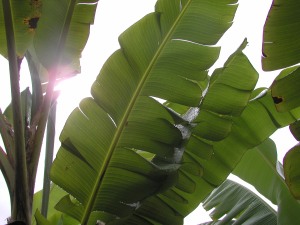 When we got Jerry to the hospital, the doctor said that he needed to operate immediately, and that even if everything went well, Jerry would not be able to put any weight on his foot for several weeks, lest he be crippled for life. Shaking his head, the doctor said that this was a very unusual break:
When we got Jerry to the hospital, the doctor said that he needed to operate immediately, and that even if everything went well, Jerry would not be able to put any weight on his foot for several weeks, lest he be crippled for life. Shaking his head, the doctor said that this was a very unusual break:
I’ve actually never seen one outside of medical-school textbooks. You don’t get breaks like this anymore. It’s a bad one. We really haven’t seen this sort of thing since the Napoleonic Wars, when men got dragged by the stirrup a ways after falling off their horses.
I must note here that the name of the street on which the accident occurred is “Jerry Street.”
For his own safety in healing, Jerry of course had to be sent home. We took him to the airport and said our farewells at 7:30 pm, as his plane was due to leave shortly thereafter. I wished him well and then quietly asked him, “Did you leave that sand here?” He said nothing, which I took to mean “no.” His plane left on schedule, but shortly after takeoff, the pilot began to get mysterious error signals. The plane had to turn around and land, and after several hours of waiting onboard while mechanics checked it out, that flight was ultimately abandoned. The passengers were loaded onto a new plane. Upon reaching altitude, it was discovered that this second plane was getting no air in the cabin. It had to go back as well. No cause was found. We later learned that Jerry finally got out on a third plane around 1:30 am.
When the students heard about all of this, they started muttering things like, “It’s eerie… just too many coincidences.” One evening after supper, a few students came to us faculty and urgently whispered, “Can we talk to you? We need to go on an ‘errand.’ Now!” We learned that a couple of weeks prior, they had found a small bottle of gin at the opening of a sulphur pit in Kilauea Caldera, an offering left for Pele, and had taken it with the idea of opening and drinking it as an end-of-semester celebration. Even though it was nearly dark, the students demanded to hike back into the caldera to return the bottle to exactly where they had found it in Pele’s home, with apologies, lest retribution fall on their heads like they believed it had on Jerry’s.
It seems important to note here that I do not mean to place a divisive religious interpretation onto Jerry’s unfortunate experience; e.g., “member of another belief system gets smited by the True God” (in this case, Pele). Instead, this story illustrates the perceived consequences of one individual not showing proper respect to the culture and the land he was visiting.
Jerry’s weird sequence of events, combined with others’ experiences of it, created a meme amongst our group that fostered a desire to be in right relationship with this place. At this moment of returning the offerings to the caldera, they inhabited an animistic worldview, one that demanded respectful behavior toward the local nature spirits.
Which Story Is True?
Several days later, after a lecture at the Hawaiian Volcano Observatory, I took the opportunity to ask Deputy Scientist-at-Large Arnold T. Okamura about his perspective on the stones. He confirmed the bad-luck kapu [taboo] against taking stones or sand off the island—but then went on to say that the story had been invented by rangers trying to protect the park’s rocks from all being taken away as souvenirs![8]
When the students heard him say that, they wilted a bit. “Oh. So it’s made up.” Suddenly finding themselves reinhabiting the traditional dominant worldview of inert, nonliving matter, my students clearly felt a thudding disappointment: it was palpable.
As an educator, I found the students’ response to Okamura’s comment fascinating. Why were they suddenly willing to believe this new story over the other one? Mulling this question over, they admitted they didn’t know and added that they now felt more confused than ever—a consciousness state I like students to grapple with when dealing with complexities. Perhaps the mundane nature of the normalizing story, or the fact that Okamura is a scientist, thus an authority, played a role in its believability.
Regardless, it was both funny and a bit chastening to see how quickly the students switched to believing a narrative that more cleanly fit the worldview they were brought up to accept as “reality,” even though that explanation contradicted their own experiences. Their quickly changing reactions to this sequence of events illustrated the strong effect consensus cultural story can have on personal belief and resultant behavior.
These students would later meet with many native people. As a result of these encounters, many would again entertain the animistic perspective they had held before. This time the perspective would stick, strongly influencing their attitudes and behaviors toward other people, other species, the spiritual dimension of life, and the land during the rest of our time together. Since college education is by nature a short-term relationship, I cannot definitively say how deeply this shift of consciousness occurred or how long it lasted, but I can say that the students’ worldviews were influenced by this series of events, and the education was more than usually transformative. Hawaiians have a word for just the consciousness process our group went through: kaona, or allowing one’s self to tolerate ambiguity and shifting meanings awhile in order to come to truth (Kape‘ahiokalani, Benham, and Heck 1998).
Native Hawaiian Relationship with Stones
With the Hawaiian islands being entirely of volcanic origin, made of new stone arising out of the ocean floor, every family who lives there—whether bird, mammal, plant, or human—first arrived either by air or sea. Human culture arrived with the first wave of Polynesians coming to the island via sea-voyaging canoes around 1500 years ago (Kane 1996). Imagine months of cramped canoe travel across the wild Pacific with pigs, plants, severely limited water, and only a story of new islands—of course these people would love the land and consider it a life-delivering deity.
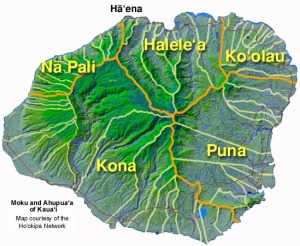 In the days of the chiefs, land was divided up into segments called ahupua‘a, which ran in pie-shaped wedges from the mountaintops down to the sea. Each ahupua‘awas a discretely self-sufficient ecological unit, containing every kind of available resource: mountain forests with timber trees and breadfruit, upland valleys with bananas and coconuts, swamplands for growing taro, lagoons for aquaculture in fishponds, and coastal reefs for fishing in the wild. The highest point of land was where every ahupua‘asection converged; the silent top of the mountain, the center of the universe, wao akua [holy territory of the gods, forbidden for humans to go without special preparation to gain permission]. The outer edge of this pie, the ocean, was common to all, unowned and unownable. Occupants, as well as chiefs in charge of a place, were considered trustees for the gods to whom it really belonged (Ritchie 1977).
In the days of the chiefs, land was divided up into segments called ahupua‘a, which ran in pie-shaped wedges from the mountaintops down to the sea. Each ahupua‘awas a discretely self-sufficient ecological unit, containing every kind of available resource: mountain forests with timber trees and breadfruit, upland valleys with bananas and coconuts, swamplands for growing taro, lagoons for aquaculture in fishponds, and coastal reefs for fishing in the wild. The highest point of land was where every ahupua‘asection converged; the silent top of the mountain, the center of the universe, wao akua [holy territory of the gods, forbidden for humans to go without special preparation to gain permission]. The outer edge of this pie, the ocean, was common to all, unowned and unownable. Occupants, as well as chiefs in charge of a place, were considered trustees for the gods to whom it really belonged (Ritchie 1977).
Before colonialism arrived around 1820, the concept of land being something that could be bought and sold was unthinkable. To an indigenous mind, there is a difference between lands and places, being “different expressions of the underlying relationship of humans with the world around them” (DeLoria 1999, 251). In Hawai‘i, land was ʻāina—literally “that which sustains us.”[9] With the consciousness shift to “land as possession” also came institutional structures that valued profit and brought a corresponding devaluation of the human soul, as suddenly the worth of a man came to be measured not by his personal mana [supernatural or spiritual power, might, authority, life force, energy], but by the property he owned (Kape‘ahiokalani et al. 1998).
For native Hawaiians, as for many other native peoples, the distinction between “natural” and “supernatural” is less a clear-cut, black-or-white set of categories than a matter of degrees along an entwined gray-(and-fuchsia) scale. They exhibit dualism in other belief areas—male/female; purity/pollution; “white man’s illnesses”/native illnesses (Howard 1974), but not in this. As a modern pagan might put it, the veils between the worlds there are thin.
Living Beings in Relationship
The stones are still considered by some kamaʻāina [native-born or long-term residents] to literally be Pele’s children (see Kamakau 1866; Kane 1996). And although all stones are Pele’s children, some are considered more animate or quickened than others. Heighton noted, “An object may be natural with some supernatural elements present in it… but the supernatural is only potential until some extraordinary event occurs to activate it” (as quoted in Howard 1974, 156).[10] How can a stone become animate? One possibility is that spirits can become part of a rock and never leave it. Other stones are known as way-stations for spirits who visit from time to time, so are only occasionally (and likely unpredictably) animate. And some are thought to be actual people who got turned into rocks by supernatural beings (Gutmanis 1991). Such privileging of certain stones and sites due to differing levels of perceived animacy or sacredness is widespread across the world, also appearing in such far-flung cultures as the Ojibwe (Harvey 2006) and the pre-Christian Celts (Fields 2004).
Every stone on the islands is of course a lava stone, of volcanic origin. Stones had many important uses in early native Hawaiian culture. Due to such tangibles as shape or location found, certain stones were known to possess particular qualities and uses, both mundane and spiritual. On the physical side, for example, water-worn cobbles were carried from the coast to the a‘a flow areas to create smooth walking trails (Kirch 1985). Other stones were used for making adzes, lures, games, sandpaper (Malo 1996) or a “labor chair” for giving birth (Pukui 1972, 179). On the spiritual side, different stones were used as offerings, for divination, fertility, healing, or to provide a place for jumping into the next life (Gutmanis 1991; Pukui 1972), perhaps like modern graveyard headstones. Some Big Island lava fields have numerous petroglyphs carved into them, including “piko stones,” concentric circles that were used to hold newborns’ umbilical cords.Somewhat echoing dolmens in the British Isles and Shiva Lingams in India, single tall stones placed into the landscape at propitious agricultural locales and near fishing areas served as the simplest sort of heiau [temple or shrine], as evidenced by archaeological findings of coral heads left as offerings at their bases (Kirch 1985). Some stood in for absent people (Pukui 1972). Particular types of stones were, and still are, specifically sought after, and used by, hula dancers. Other stone types were meant for fishermen—and some of these, which first make themselves known in a dream, possess the added quality of flirtatiousness with their men (Gutmanis 1991; Beamer, pers. comm, 2003).
It was said that only the guardian of such a stone could handle it. Once a stone was chosen, it had to be cared for as one might a baby: cleaned, fed, and clothed (Gutmanis 1991).[11] If others held the stone and it didn’t wish them to, it would become hot like fire. As Heighton remarked,
A stone may have potential power (mana) which normally remains completely inactive. The power can become active and possibly dangerous when something in this world causes something in the other [sky or spirit] world (lani) to motivate that stone to show its mana….Thus an object such as a stone is potentially harmful. The individual through careful use of a set of kapu [prohibitions] and of active rituals may either use the power, redirect it, or return the object to its original state. Mana itself can be good or bad depending on the circumstances. (as quoted in Howard 1974, 156)
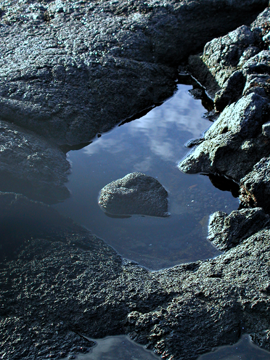 Strange as these ideas may seem to most contemporary Americans, we are not exempt from experiencing them. I have actually experienced the eerie, inexplicable sensation of a particular stone growing painfully hot in my hand. A local cultural expert later examined it, and explained that it was a special “birth stone” from Kōloa , a particular region of the beach at Punalu‘u,[12] and was used by her aunties in healing. To my mainlander’s eyes, this was a simple lava stone like all other lava stones. But Momi Subiono recognized this stone like a naturalist at home might know a particular local bird or herb, able to name its qualities, habitat, ecosytemic relationships, and uses. My quest to understand the mysterious, uncanny phenomenon of the suddenly hot stone, and how best to respond to it, was one catalyst for this study.
Strange as these ideas may seem to most contemporary Americans, we are not exempt from experiencing them. I have actually experienced the eerie, inexplicable sensation of a particular stone growing painfully hot in my hand. A local cultural expert later examined it, and explained that it was a special “birth stone” from Kōloa , a particular region of the beach at Punalu‘u,[12] and was used by her aunties in healing. To my mainlander’s eyes, this was a simple lava stone like all other lava stones. But Momi Subiono recognized this stone like a naturalist at home might know a particular local bird or herb, able to name its qualities, habitat, ecosytemic relationships, and uses. My quest to understand the mysterious, uncanny phenomenon of the suddenly hot stone, and how best to respond to it, was one catalyst for this study.
It is important to note that the above descriptions of the natives’ particular uses of stones are not so much about the qualities of individual rocks as they are about the relationships between these rocks and the people, spirits, their resting places, and the like. The stone and the person must choose one another for a particular purpose, else trouble may ensue.
The Old Becomes New Again: Systems Thinking and Hawaiian Worldviews
This emphasis on relationship illustrates a radically different worldview from the one that has for many years informed the scientific method, which seeks knowledge through the examination of individual parts. However, this indigenous sort of relational stance is echoed in the ecological sciences and in the newer emphasis on whole systems thinking.
Among its other aspects, whole systems thinking focuses less on the parts than on the synergistic whole and the movement between its parts, from which the qualities and even the existence of each concrete part may be said to arise (Capra 1996). Buddhists will similarly recognize this as pratītyasamutpāda or “dependent co-arising,” the idea that all phenomena (including beings) arise together in a mutually interdependent web of cause and effect. Thich Nhat Hanh (1975) gives a beautiful example of this when he describes looking at an orange, and seeing a cloud. How is that? Impossible, crazy talk; yet simple if thought out systemically. The orange could not exist but for the tree that it grew from; and that tree only exists because it sprouted from a seed due to the dance between earth, sun, and water; and the water arrived on earth in part by rain falling from a cloud; and so forth. These are old views of reality based in longitudinal observation of nature and thus, unsurprisingly, shared across the globe. The linguist Dan Moonhawk Alford (as quoted in DellaFlora 2000) noted that in much of Native America, God is spoken of in verb form. In Lakota or Cheyenne, God is not “Great Spirit” as portrayed in numerous films but actually closer to “Great Mysteriousing,” and Cherokee call upon “Thinks Breath Creates.” To sum up my point here, indigenous perspectives tend to focus much more on the moving relationships between beings and processes than on the static individuals engaged in those relationships. (They are also less likely to see these individual beings as static.)
Such relational ties extend to animals, stones, and processes as well as other people. Native Hawaiians consider themselves literally related to nonhumans through their ‘aumakua, a family’s deified ancestral spirit helper who generally appears in the form of a real living being such as shark, lizard, or owl. They may also take the shape of an object like a rock or a cloud. Each family’s specific ‘aumakua also brings with it a particular set of principles, values, and standards (Meyer 2003, 46, 108). In the ancient Hawaiian creation story Kumulipo, the first child of Papa and Wākea, the cosmic earth and sky beings who created everything, is the taro or kalo plant, with human beings coming along second. People therefore owe taro the great respect due one’s elder sibling; which means we should not, for example, speak roughly to one another or make crude jokes at a table where taro is being served.[13] Kane notes that for early Hawaiians,
There seems to have been no concept of the supernatural as that term is used in modern religions. Theirs was a universe in which everything (including the gods) was natural and therefore of Nature, an organic universe in which every thing and every person had its integral place within the whole. Success was achieved by living in careful and reverent harmony with Nature, failure to do so being marked by swift retribution from the gods. The modern concept of Nature as an object of conquest would have been incomprehensible to the Polynesian mind. In all Polynesia, religion so permeated every aspect of life that there was no separate word for it. (Kane 1996, 22)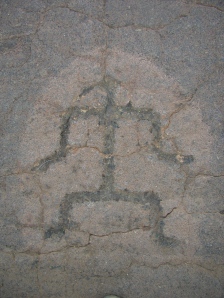
The native Hawaiian relationship with stones—the children of one of their deities—is very different from the currently dominant Cartesian/ postindustrial norm that views stones simply as inert, “dead matter” and potential building materials. Further, this worldview is not just a wistful yearning toward the past or even a myth (although it behooves us to remember the basic tenet voiced by both Joseph Campbell [1972] and Coomaraswamy [1997] that in some deep way, living myth is always true). It is instead a currently living, relational perception, and one that might be best understood when illustrated by stories.
“Pele’s Curse”
What happens when someone from the dominant culture encounters this living native worldview, and further, finds it reinforced by the anomalous “behavior” of rocks? It turns out that the experiences described in Jerry’s story are far from unique.
I noticed large piles of stones out back behind the post offices in Hilo and Volcano, and behind certain hotels. Upon asking, I learned that postal workers and hotel clerks on the Big Island have to contend with large, heavy packages daily—packages containing lava stones that visitors are returning, hoping to get their lost luck back. Letters accompany these stones, describing horrible things that befell the vacationers and their families ever since leaving the island with a lava rock in their bag, and further begging Pele to forgive them for stealing her children and to stop punishing them.
Personal disasters ascribed to “Pele’s Curse” include physical ailments such as broken legs or strange rashes, weird runs of bad luck, material losses like houses being broken into, job troubles, animal bites, unsuccessful business ventures, divorce, and even multiple deaths (see Bricking 2003; Chalfant 2003; Kane 1996; Smith 2000; Ting 2001). Snopes.com (2007), an excellent Internet website for debunking urban legends, verifies the reality of this phenomenon. The letters come from all over the world, from people with all sorts of belief systems. A typical sentiment expressed in these letters seems to be something along the lines of “I don’t believe in this stuff, but it seems to be happening anyway.” Like my students, they felt that there were just “too many coincidences.”
Park rangers are also building muscles over these stones. In 2001, Hawai‘i Volcanoes National Park ranger Norrie Judd reported receiving an average of five packages per day containing returned lava items. The packages include sand, coral, and objects like jewelry and figurines made out of hardened lava, but simple lava rocks themselves constitute the majority of returns. Judd does not personally believe in any connection. “We have not found any written curse in the history associated with lava rocks,” she said. She further finds tourist response to the widespread story to be quite a nuisance. “It’s very time-consuming to open the boxes and read the letters and put the rocks back” (as quoted in Ting 2001, 113).
Despite Okamura’s claim of “ranger origination,” the stone-taking prohibition is not new. The 1847 memoir of missionary Hiram Bingham describes an encounter with a furious “prophetess.” Going by the very name of Pele, she demanded that missionaries be sent home for repeated offenses against the volcano goddess—offenses of the exact sort that Jerry perpetrated, including taking away bits of volcanic glass (Kane 1996, 50).
Pele’s Curse: Delving Deeper
I became very curious about the pohaku phenomenon. How widespread are these beliefs? Is “Pele’s Curse” just a propaganda story for tourists, or do locals believe and experience it too? For the next two years, I conducted historical research and also asked every local person our group met in the course of our studies on the Big Island about their views, through casual but semi-structured interviews. Had they heard of this phenomenon? If so, what did they think was happening? Would they personally take a stone off the island? And did they believe in Pele? The following portion of this paper is a snapshot distillation of those many conversations and inquiries.
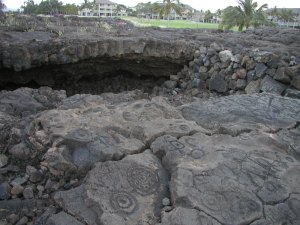 Besides the deep cultural insights each speaker brings, the most interesting finding of the study is that nearly every single person I spoke with who had lived in Hawai‘i longer than two years, regardless of worldview or religion of origin, stated that they would not take rocks off the island.[14] Even though this stance toward the stones echoes the ancient worship of Pele (and Pele worship is still active and widespread amongst traditional Hawaiians), the incorporation of this very animistic belief/behavior choice does not necessarily imply a changing of religion. As Matsuoka et al. note in their engineering study of the lava flows, “There is a broad range of people, Hawaiian and non-Hawaiian, Christian and non-Christian, who acknowledge and respect Pele as deity of the Hawaiian volcano” (USDOE 1996, 152). Rather, it seems to me that this stance evolves out of personal contact with the power of that particular island. After all, Kilauea has flowed nonstop since 1983. As Kane (1996, 6) wryly noted, “I have yet to hear a Hawaiian—or a geologist—suggest that it is time to cast Pele into the dustbin of superstitious nonsense.”
Besides the deep cultural insights each speaker brings, the most interesting finding of the study is that nearly every single person I spoke with who had lived in Hawai‘i longer than two years, regardless of worldview or religion of origin, stated that they would not take rocks off the island.[14] Even though this stance toward the stones echoes the ancient worship of Pele (and Pele worship is still active and widespread amongst traditional Hawaiians), the incorporation of this very animistic belief/behavior choice does not necessarily imply a changing of religion. As Matsuoka et al. note in their engineering study of the lava flows, “There is a broad range of people, Hawaiian and non-Hawaiian, Christian and non-Christian, who acknowledge and respect Pele as deity of the Hawaiian volcano” (USDOE 1996, 152). Rather, it seems to me that this stance evolves out of personal contact with the power of that particular island. After all, Kilauea has flowed nonstop since 1983. As Kane (1996, 6) wryly noted, “I have yet to hear a Hawaiian—or a geologist—suggest that it is time to cast Pele into the dustbin of superstitious nonsense.”
Anecdotal stories about outsiders’ mysterious encounters with stones appear long before the modern tourist trade arrived on the islands. In the early 1900s, haole[15] road builder George Galbraith had a dream in which a stone came to him and complained that it was now wrong-side up and preferred to stand the other way. “You have my feet up and my head down; please turn me around,” said the stone (Gutmanis 1991, 8–9). When Galbraith awakened, he recognized the stone in his dream as the one he had moved that very day to the side of the road. Two older Hawaiians who helped move it back later told their supervisor the stone’s name; it was known to hold a legendary spirit that ought to be cared for.
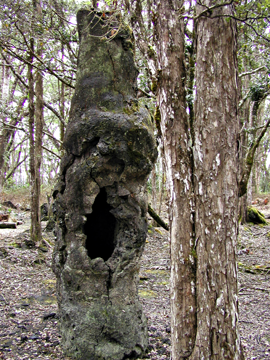 Another interesting case involved an enormous boulder that local Hawaiians viewed as the guardian of a mountain pass. It was widely thought that if ascending pilgrims made an offering to this stone before going over, they would be safe. During World War II, construction of a military road over this pass began. Workers moved the huge boulder in question to the side of the road—only to find, upon arriving at the worksite the next day, it was back in its original place. This happened not once, but several times. Finally, the far-from-mystically-inclined construction company changed their plans and moved the road a few feet over. The reported reason for this change was to leave the stone “where it wanted to be.”[16]
Another interesting case involved an enormous boulder that local Hawaiians viewed as the guardian of a mountain pass. It was widely thought that if ascending pilgrims made an offering to this stone before going over, they would be safe. During World War II, construction of a military road over this pass began. Workers moved the huge boulder in question to the side of the road—only to find, upon arriving at the worksite the next day, it was back in its original place. This happened not once, but several times. Finally, the far-from-mystically-inclined construction company changed their plans and moved the road a few feet over. The reported reason for this change was to leave the stone “where it wanted to be.”[16]
For contemporary tourists from the mainland United States, the causality of taking pohaku home leading to subsequent bad luck seems to be ascribed to one or a combination of the following: (1) psychological guilt (I took the rock, thus violating a cultural tabu; that was bad; I deserve the bad luck); (2) fearful punishment by a wrathful deity/the island’s curse (I took the rock; that was bad; divine/supernatural retribution followed); and (3) random causal reinforcement providing a simple explanation for inexplicable misfortune, thus making the problems seem easily reparable (I’m not a bad driver or difficult spouse; my multiple traffic accidents and divorce must be due to that rock!).
But as discussed below, for the respondents living in Hawai‘i and especially those identifying as kamaʻāina [natives], the pohaku phenomenon is a matter of respect, courtesy, and maintaining positive energy in one’s relationships with the nonhuman world. My findings echo the volitional world Heighton discerned in Hawaiian beliefs:
The living world envisioned by Hawaiians is a form of animism which seems to determine to a great extent how Hawaiians act or do not act…. Each part of nature is considered to have a personality which operates under its own will and is related in some way to human beings….In an illustration of this living world, stones are not to be moved or used unless they are first asked if they are willing. (as cited in Howard 1974, 156)
This stance illustrates a mutually reciprocal relationship that both stems from, and reminds us of, the spiritual dimensions of this ecosystem.
Four Contemporary Native Voices
Polynesian sailing canoe operator “Captain Kiko” Johnston-Kitazawa thinks that the bad luck stories are actually a matter of guilt. You know you should not take the rocks but you do it anyway, so bad things happening later get ascribed to that bad or wrongful act. “After all,” Kiko observed, “geologists are taking them all the time for research, yet little seems to happen to them!” [17] That said, he also thinks that you should ask a rock before taking it.
Questions you might ask are “Where do you want to be?” or “Where do you belong? On a coffee table in Pennsylvania, or right here?” And then, this is the most important part, then listen to the answer. Also ask yourself, “Why do I want to take it?”
Kiko’s questions echo anthropological findings suggesting that to Hawaiians, the living world is imbued with animacy and agency. In their 1970s study on community strategies in Hawai‘i, Heighton found that even “for a person to bring a stone home from the beach without its wanting to come may cause trouble within the person’s family” (as cited in Howard 1974, 156).
Danny “Kaniela” Akaka’s life is an interesting blend of cultural lines. A Polynesian voyager and also son of a senator, his career as cultural historian at the upscale Mauna Lani hotel includes the ethically difficult component of offering prayers to appease local spirits before breaking ground for new big tourist erections. The hotel receives boxes full of stones with accompanying letters every week, all of which get passed on to him. Akaka says of the stone-taking question,
It’s a matter of spirit. Hawaiians believe spirit is in everything: there are 400,000 spirits on this island, each with their own songs and offerings and personality. Some stones care about being moved; others don’t. It’s sort of like if someone picked you up and took you from your home to use as a doorstop—you would have feelings about that. And over time, you’d try to communicate these feelings—in any way you could, perhaps with increasing frustration. Some of the letters come from folks who were here years ago, and continue to have a run of bad luck. Finally a friend asks, did you take anything when you were on the Big Island? And then they get chicken skin,[18] and know. [19]
Remembering Kiko’s words, I asked Kaniela, “Is this only limited to lava stones? What about the use of Carrara marble here in this resort, and other stone-taking worldwide?” He thought about it, then said that the Hawaiians used a lot of stones as well; the difference lies in first asking permission—and also really listening to the answer, which comes in the form of a feeling, not usually words. “Like, if you get an uncomfortable feeling, the answer is “no,” and you need to honor that. If you feel at ease, it’s probably okay.” Kiko and Akaka are acting as spiritual ambassadors, teaching visitors to listen to the land.
Winona Kapuailohiamanonokalani Desha Beamer (a.k.a. “Aunty Nona”) is a Kupuna [respected elder] and Kumu Hula [hula source/pattern/teacher of ancestral ways and connections] with a long family history of educating through ancestral song and hula dance. Despite being degraded for the tourist trade, hula is in essence a deep native spiritual practice, originally intended for worship. Aunty Nona is happy “that view of hula as ‘hookie dookie hoola hau’ is changing; now we’re getting the sacred back.”[20] According to Nona, visually beautiful bodies and costumes are actually peripheral to the dance; what matters is transmitting feelings through the story. There are different chants for different parts of the island. If you go to these places, you can find petroglyphs; these are records left in the rocks for male priests. She says that the true practice of hula is all-encompassing—it changes the practitioner’s entire life, in a way that creates deeper connections with ancestors, the land, the divine, and the dancer’s highest self. “See, in the stories it’s not genius that we want to foster; it’s the good neighbor. The heart, the aloha.” Further, hula is intimately tied to nature spirits.
You don’t just go out and buy a lei[21] to decorate yourself for the dance; you go to the place where the plant grows. Further, you don’t pick them haphazardly. You wait for the right time of the moon, the right winds, and you offer up the right chants.
When I asked Aunty Nona what she thought about the controversy over taking stones, she staunchly replied that taking them is basically rude:
Common courtesy will tell you that you don’t take other peoples’ property! You don’t take things that don’t belong to you from others’ back yards! All the strengths from all the spirits have come down through the ages…. We’re not standing here alone, you know! We have a huge lineage of support behind us. All the people before us are standing here now.
Does she believe in Pele? “Oh yes, absolutely. Because we are Big Island people, Pele is our foundation. We always go to the volcano to dance.”
Kia Fronda is a traditional taro farmer, Vietnam veteran, educator of native ways for Hawaiian children, and chanter who once performed with the rightfully famed Hilo hula troupe Halau o Kekuhi. As the students and I helped with the planting in taro fields that had also been worked by his grandparents, Kia described the essence of a beautiful and important concept of reciprocity. With his arms held straight out before him from armpits to fingertips, he placed his palms down toward the earth and exhorted us to
Always bring offerings before choosing—that’s “choosing,” not “taking,” as there’s no word for that in the Hawaiian language.
Modern people don’t usually think to offer, only take take take. It’s a matter of negative energy. Taking away equals negative energy; bringing it equals positive energy. Not “bad or good,” but negative and positive.
He turned his hands palm up to show choosing or accepting, as in eating. “That way, the balance is kept. If we choose something to eat, tell it why. That’s its function, to serve as food.” I asked him if “function” could be why geologists seem to get away with taking stones but tourists get in trouble—because the stone does not belong on a shelf; there, it serves no function? Kia said “Yes,” then continued:
So Hawaiians always bring gifts before choosing. In hula, for example, we need plants to wear and to use for other functions [like making ipu drums], but will always offer something first, to create balance.”
Reflection
The concept of offering something first to create balance makes a lot of sense. Applying it to food growing as an example, without receiving offerings to replenish the soil, crops will grow progressively weaker. Better to first put the fertilizing compost in the ground, then seeds, then water, then loving energy in the forms of weeding, picking off bugs, and the like; and only later, after all of that, does the farmer then choose the plants to harvest and eat.
In the case of the stones, the common vacationers’ mentality of “It’s playtime in paradise: I can do whatever I want!” has led to a lot of environmental destruction and economic inequity. Through exposure to “Pele’s Curse,” the stones are in essence teaching many to remember the importance of function. Taking this lesson even further, what if visitors (vacationers and anthropologists alike) were to rethink the impact of each visit? Accordingly, what if, before or upon arrival, appropriate offerings were made for the well-being of the place and people from whom the visitors will be accepting such wonderful experiences? Vacationers could offer money, labor, time, spiritual gifts, a truly open listening ear, or engagement with some community project. How different then would the quality of the welcome be? How would the relationships shift?
The staple crop taro provides edible young leaves and a starchy root known as the corm. After slicing off most of the corm to eat, wetland taro is propagated by replanting a 2-3 inch section of corm attached to a foot-long section of the huli or ha, green stem.[23] The mind-blowing possibility exists that some of the taro my students were planting in Kia’s fields were the same exact plants brought over on the original Polynesian voyaging canoes. Not the seedlings or children of these plants but the same plants, cut and regenerated over and over again.
Imagine one single plant feeding generations of people. Imagine eating from the same plant your ancestors ate. And further, the creation story you grew up with tells you that in the cosmic scheme of things, this plant that you live near and work with every day is literally your elder brother. Pondering this, a person can begin to understand what it really means to belong to a place.
The Effects of Cultural Story
Why are such stories important? Countless philosophers have noted variations on the theme of “with our thoughts we create the world; therefore guard accordingly.” Telling the story “Girls are bad at math” has led countless children to believe that and become so. If it seeps into the unconscious, a bad story can severely limit one’s reality, becoming like kryptonite to Superman: being around it dramatically diminishes the listener’s powers. In contrast, as Freud recognized so long ago, a healthy story can supplant an unhealthy old one, thus liberating the teller. Imagery in stories can even be deliberately employed to help the severely ill physically heal (see, for example, Achterberg 1985). Much of the global action today is being driven by an inherited kryptonite story, as discussed below. But Pele’s Curse and the like contain hidden powers to reconnect those who experience it with the source of life. Inhabiting a narrative such as this, even for a little while, helps people enter a world that seems more alive, volitional, and reciprocally responsive. Such a response can be seen in many kamaʻāina [native and long-term locals] when asked their views on Pele’s Curse and relationship with the stones.
Why does cultural story matter? Because worldviews inform thoughts, which in turn create actions, which, collectively, create the structures we live in. In short, the stories we tell determine our reality.
Modernity’s Story
Stories involving peoples’ relationships with land abound as a motif, and can be read with an eye open for collective wisdom to be distilled from them. Examining old Euro-American fairy tales as one example of cultural-morality lessons, I find it significant that none of them teach that the protagonist can get away with doing whatever she likes with no consequences. Yet that is the dominant story now operating in the globalized arena, and it illustrates not only a questionable ethical base but a severe disconnect with the way the earth’s ecological systems work.
This currently dominant story is called “post-colonial modernity.” There are numerous assumptions implicit in the story of modernity. To name a few: first, this story assumes that members of our species are (and can be) in charge, that humans have the capacity to understand and control huge living systems even though we are enmeshed in them. Second, there is the assumption that matter is inert, dead. Third, the story assumes that each person is an autonomous, independent individual. Fourth, the assumption that our structures (like the GNP) must continually grow to progress, and that continual progress is desirable: the ideology not of a sustainable system, but of the cancer cell. So if the dominant hegemonic story is viewed with a gimlet etic eye, the laughable and even dangerous chutzpah inherent in its stance becomes obvious. The idea of humans effectively controlling the vast, complex matrix of living earth systems and beings is akin to the idea of trees running the Internet. This complexity is simply beyond humans’ capacity to even begin to understand, let alone control, and the attempt has certainly led to trouble.
Buckminster Fuller once complained that the earth had come without a good operating manual. However, there are actually a lot of instructions that have stood the test of time, and these often appear in the form of native story. The industrial growth society has largely overlooked that older story. The big difference is this: modernity offers “raw materials” and “commodities” where there once were relatives in many different sorts of bodies. This current story is one in which the world is not alive.
The state of our planet’s health today testifies as to how poorly modernity’s story is serving human survival. Yet its denouement is coming. If the current trajectory of consumption, population and technology continues, we will soon be seriously overbudget in terms of planetary regenerative capacity. According to the Global Footprint Network (2008), the human race is currently over-using the Earth’s resources by 23 percent; in other words, we used up our year’s supply of resources by late September. For everyone on earth to live like US citizens, it’s estimated that it would take five Earths to provide the raw materials alone. This obviously cannot happen: we need a new story.
Indigenous peoples’ stories have worked well for thousands of years, overall pointing to various forms of sustainability and harmony. For those living in the throes of the inanimist ideology of the industrialized Global North, it makes sense to look at indigenous stories of the land as models for creating or recovering their own. The next section describes some observable effects of such stories.
Revalorization of Indigenous Knowledge
Kia’s work with young Hawaiians, bringing them onto his land and teaching them the old ways of taro farming, chanting, leihala weaving, and so on is part of a larger wave of movement in Hawai‘i toward cultural revitalization. The revalorization of their indigenous knowledge really began in 1975 with the building of the Polynesian voyaging canoe Hokule‘a, which was then sailed and paddled from the peoples’ ancestral homelands near Tahiti, replicating their original journey to these islands. Before this, the natives were largely seen as second-class citizens, displaced as they were by the theft of their land, language, and ways first by missionaries and then the U.S. government (formally acknowledged by US Public Law 103–150, 1993). There are still many “houseless”[24] Hawaiians living on the beaches. Illiteracy, poverty, and illness are still higher amongst natives than amongst immigrant peoples, just as in other colonized areas. Native Hawaiians have the worst health and socioeconomic indicators of any ethnic group in Hawai’i (Polynesian Voyaging Society 2008). As so often found in colonized peoples, low self-esteem and internalized oppression remains rampant.
But there is a manifest collective turn among Hawaiians toward appreciation of, and pride in, their cultural heritage. Thousands have now sailed on the Hokule‘a, learning how to read the nuances of winds and waters as their ancestors did. The resurgence of surfing, Hula, and Polynesian voyaging means that native Hawaiian youth are seeing the beauty and value in their own traditions, and that thousands of people from all over the world are witnessing an intimate native love affair with the divinity of the land. The Kamehameha Schools offer excellent free education for native children. Factions of the Sovereignty Movement are seeking to restore ownership and/or governance of the islands to the Hawaiians. And native arts and plant-based technologies are once again respected and flourishing.
Native Hawaiians have used their own cultural story to challenge the implementation of this modernity saga in a number of cases; for example, the planned geothermal plant and development on Mauna Kea. These examples show how the native eco-spiritual worldview provides the basis for a powerful narrative of resistance. The natives have so far not prevailed, but they have provided political motivation that is gaining strength and may indeed become the dominant someday. After all, hula was once nearly wiped out, yet today it thrives and is even celebrated worldwide through the Merrie Monarch festival—as Aunty Nona said, “we have a huge lineage of support behind us.” This is a classic story of cultural revitalization.
The reawakening in non-natives of a native-style animistic caring about the more-than-human world holds the possibility for similar transformation, thus offering one possible denouement of the postcolonial modernity saga. Vine DeLoria noted the need to bring such native insights to bear on current policy:
No real progress can be made in environmental law unless some of the insights into the sacredness of land derived from traditional tribal religions become the basic attitudes of the larger society (1999, 213).
There is growing respect between factions who have traditionally had very different ways of looking at the same phenomena. The perception of a perpetual and unbridgeable rift between science and spiritual viewpoints that is so prevalent in recent scholarship is being mended in Hawai‘i. Scientists at Hawai‘i Volcanoes National Park are now consulting kupuna [elders] for help with interpreting ancient oli mele [holy chants] that may hold clues to the geologic history of the islands. For example, one such chant mentions “nine layers of earth,”[25] which, it turns out, do exist. This information was not previously known to science, but had long been held in this form of spiritual art. The senior geologists at Hawai‘i Volcanoes National Park do not consider it silly or beneath them to seek out these unusual founts of knowledge; indeed, they consider themselves lucky to have them and are enjoying the chance to work collaboratively with local elders. And the Hawaiian people, who have had their culture denigrated for so long, are benefiting from seeing that their old ways contain inestimable value, even to the currently dominant haole culture.
Fostering Ecological Consciousness and Behavior
Belief in the stones might be expected of a kumu hula like Nona Beamer. More surprisingly, when mainstream people are brought into contact with indigenous worldviews through story and experience, they too can unintentionally find themselves being brought back into deeply spiritual relationship with the more-than-human world.
Even scientists and rangers on the Big Island shift away from pure materialism where Pele is concerned. I interviewed Ted Eriksson, a strapping young ranger at Hawai‘i Volcanoes National Park whose Viking heritage is readily apparent. He began by stating unequivocally that the tales of danger when taking rocks are just a myth for the travel brochures. But then he also mused that he would not do it himself—just in case. And by the end of our conversation, a very different worldview was unveiled. “I believe in Pele,” he began, “but she’s not a god.” Regarding the stones, he replied, “Do you think she’s going to care about, or be thinking about, you taking a rock to Pennsylvania? It’s not a guilt thing. For Hawaiians, this is not a matter of fear, but respect. Pele can create and also destroy.” I asked him, “What’s your personal perspective?” Eriksson raised his eyebrows. “I live in a cabin around 200 yards from the caldera. In that situation, you have to have respect or you might not survive.” He paused, and then added, “This might sound weird, but I feel that the land welcomed me…the friends I have; the way things worked out when I came back to this island…” “And yes,” he nodded, “I believe in Pele. She’s an enormous power.” He looked at me with a wry expression, and then shook his head and laughed, “I shouldn’t be telling you what I think because I’m in uniform, but I am.”[26]
As I noted earlier, regardless of their race or original belief systems, both locals and repeat visitors whom I interviewed stated that they would never personally take rocks or sand off the island; and further, that they each hold respect for Pele in some form, whether goddess, ancestor, or molten lava. Eriksson’s beliefs had shifted as his exposure to this place, this living land, deepened over time. The shift was toward a deeper emotional connection; a heart connection. Interestingly, I have heard several native Hawaiians comment that if the world were mapped as a human body, Hawai‘i would be its aloha, its heart. Could it be that the land itself was teaching Eriksson to relate differently?
We can see this consciousness shift beginning in casual tourists. After bad-luck experiences in conjunction with taking stones, it’s significant to note how often tourist letters bear echoes of words like Fronda’s. Remember that these are people for whom animism is likely not an everyday thought or way of life; people who have inherited a worldview of “dead matter.” Yet a shift toward a new position of animistic respect and even resacralization of the physical, embodied natural world—a worldview closer to that held by many indigenous peoples—has occurred:
I hope that [these stones’] return appeases Pele, plus any other Hawaiian spirits that I might have offended, and hope that she/they may one day see fit to forgive me for my careless, rude, and disrespectful actions when visiting your beautiful islands. –Jeb, Burke, VA (Volcano Gallery 2002).
Particularly important to note in this time of ecological crisis is that such an indigenous attitude of respect is not only internal, but is expected to translate into a particular set of balanced and life-fostering behaviors. Hawaiians call this attitude pono, a complex term that encompasses goodness, well-being, purity, integrity, perfection, success, proper procedure, and the notion of personal and professional excellence (Meyer 2003). Pono is often translated into English, for better or worse, as “righteousness,” because acting pono out in right behavior [hana pono] encourages “harmony among persons, and among persons and the psychic forces of nature and the supernatural” (Pukui 1972, as quoted in Meyer 2003, 109). Reciprocity, ho‘oponopono, was viewed as essential for survival; and fundamental to reciprocity are effective relationships with all beings (Meyer 2003). The poignant letter above exhibits a sense of the writer’s feeling not guilt or fear of divine retribution, but rather like a child receiving a corrective lesson about proper treatment of others.Returning the stones—and better yet, deliberately not taking them in the first place—are acts of pono. And this mainlander has learned it.
The native worldview is deliberately being leveraged to bring us back into right relationship, for example, with coral reefs. Waikiki Aquarium sponsored a 2003 lecture series named “Papa and Wākea,” after the native creator earth/sky gods, which included an evening about limu [seaweeds]. Instead of simply covering natural history, two professors discussed “the importance of building understanding and reconnection to our reefs today, as we incorporate our rich cultural histories into modern resource management” (Abbott and Hunter 2003). I find this somewhat radical in an animistic sense. In essence, the aquarium is inviting people to allow the indigenous spiritual stories of the island to infuse future approaches to management, presumably with the intention of bringing those ecological stewardship decisions more in alignment with pono.
The AEI students, immigrants to Hawai‘i like Eriksson, and the recalcitrant stone-taking tourists all provide examples of the sort of consciousness shifting that can happen when mainstream people with open minds and hearts come into contact with landscapes that are still inhabited by the old stories. But it must now be noted that the stories, while powerful, are not the core of this transformation. They merely serve as the vehicle to bring us into alignment with the deepest teacher—the earth itself.
The Land Influencing Consciousness
The prevalence of the pohaku experience, the commonality of stories told about its origination and healing, and the attendant subsequent shifts in behavior and worldview, together bring up a philosophical question of enormous import: Could the land, through cultural stories, be teaching humans how to be in proper respectful relationship with it?
Dead Matter and the Spiritual Fall from Grace
 The examples of tourists like Jeb above and my students present signs of a significant shift in worldview due to anomalous experience. And as the previous section demonstrated, such a consciousness shift carries the likelihood of an attendant shift in future behavioral choices. Therefore, it offers a means to address the problematic aspects of the currently dominant worldview.
The examples of tourists like Jeb above and my students present signs of a significant shift in worldview due to anomalous experience. And as the previous section demonstrated, such a consciousness shift carries the likelihood of an attendant shift in future behavioral choices. Therefore, it offers a means to address the problematic aspects of the currently dominant worldview.
Amongst my group of students, the weird sequence of events and their discussions about it created an animistic meme that fostered a deep desire to be in pono with this place. But before this new ecological consciousness solidified, the students in Jerry’s story exhibited a temporary shift back to the currently dominant worldview, catalyzed by hearing Okamura’s claim of “park-ranger origination.” This consciousness shift carries with it enormous ramifications for environmental relationship. Think about this: If the Pele’s Curse story was indeed made up recently by rangers or tour guides, then it is therefore of no consequence how we treat the stones. Suddenly, the land is perceived as less alive, less participatory, no longer infused with the divine. Humans alone have consciousness and volition; therefore, only humans matter. Hence, humanity’s potential for full, engaging, spiritual relationship with the world and all of the other beings living here is severely diminished.
Many outdoor leaders, such as myself, who work with groups in wild places for any length of time repeatedly witness psychological effects of alienation from nature. Such feelings as disconnection, depression, fear, dullness, numbness, tightness, ennui, loss of dreams and creativity, and a sense of being very alone in a cold world (see, e.g., Greenway 1995) can be identified largely through the healing that follows a return to deep relationship with the living world and the wild self.
Through Jerry’s stone adventure, my mainland student group experienced a brief moment of foraying into an animistic world full of agency and mystery—and leaving that world felt to them like a fall from grace.
This makes a lot of sense, if we think about it. For most of our tenure as a species on this planet, humans have held an animistic perspective; one that believes and acts as though, as a Chukchee shaman once noted, “everything that is, is alive” (Cloutier 1980, 35–6). One observation from the emerging field of ecopsychology is that acting as if the world is dead can send us into despair and self-destructive behaviors. Perhaps the original “Fall from Grace” was actually a fall up—away from recognition of the immanent physical world as divine, and now the quest for God must take place right here. Buddhist ecophilosopher Joanna Macy explains the importance of reclaiming an animistic perspective at this time:
[After] several millennia of assigning the sacred to a transcendent dimension removed from ordinary life, the world around us begins to go dead and loses its luminosity and meaning. The Earth is reduced to a supply store of material resources and a sewer for our wastes. And in such a world, devoid of the sacred, anything goes -buy up, sell off, consume as much as you can! What’s so beautiful about being alive at this moment is that the pendulum is starting to swing the other way. We are retrieving the projection. We are taking the sacred back into our lives. The swing is from transcendence to immanence. The most vital movement of our era involves making the sacred immanent again. (Macy 2000)
Stones’ Homecoming Ceremonies
Attempts are currently being made to bring a more ceremonial aspect to the returning of the mailed-home stones back to Pele. One can imagine that this trend will continue, as local entrepreneurs are now beginning to capitalize on the pohaku return. For example, an enterprising citizen of the Big Island’s Volcano Village has begun offering a “rock return” service, perhaps to diminish the incredibly huge pile of lava rocks massing behind the visitors’ center at Hawai‘i Volcanoes National Park. For a $15 donation, Rainbow Moonwill perform a ceremony that involves wrapping the rock in a ti-leaf (traditional for offerings), then returning it to Pele with a gift of orchids to ask forgiveness. Moon will also photograph the rock and post the photo, along with the tale that caused the visitor to return it, on the web (Volcano Gallery 2002). Similarly, Outrigger Waikoloa Beach resort has created a “healing garden” for wayward stones’ reunions with Pele:
Once a month, kahunas (priests descended from ancient Hawaiian priests)[27] perform the Hoaka Ho’omalu, a ceremony asking permission for the garden to become a resting place for the rocks. They chant for the person who took the rock to be healed, for the land it was taken from to be healed, for the “child” rock to be reunited with its mother Pele. The Outrigger resort’s staff sends a personal letter to each penitent letting him or her know the rocks have been respectfully returned. (Chalfant 2003)
Although these ceremonies are admittedly done for remuneration, their popularity shows a strong desire for resacralization. They invoke healing for everyone concerned—stones, land, and people alike. This is an interesting animistic twist on restorative justice work.
The Practical Side of Goddess Worship: Ecological and Cultural Sustainability
Cultural stories that foster or expand ecological consciousness prove eminently practical, as they can also carry behavioral effects that promote long-term sustainability.[28]
To illustrate, respect for Pele as the volcano goddess often leads to religious practices such as making offerings. Interestingly, these practices done pono, in the “right way,” not only bring people into spiritual communion with the divine but also actually serve to strengthen the health of the ecosystemic community and the likelihood of future survival.
An example of this can be seen by considering the ‘Olelo No‘eau, a collection of Hawaiian proverbs or credos for good living. Red ‘ohelo berries are sacred to Pele. ‘Olelo No‘eau number 2044 states the following: “Mai hahaki ‘oe i ka ‘ohelo o punia i ka na noe,” which translates as “Don’t pluck the ‘ohelo berries lest we be surrounded by rain and fog and lose our way.” Matsuoka et al. interpret this as
a warning not to do anything that would result in trouble, for it is kapu to pluck ‘ohelo berries on the way to the crater Kilauea. It is permissible, however, to pick these berries at the crater if the first ‘ohelo is tossed into the pit of Pele. (USDOE 1996, 246–7)
Ethnobotanical education director and native craftswoman Momi Subiono offered the splendid observation that these “superstitions” have the very real effect of creating a healthy environment. It’s not only the first ‘ohelo berries that are offered to the volcano goddess, but the biggest and best. The consequence of this is that these most excellent berries are the ones most likely to propagate into new bushes, thus ensuring strong bushes full of glorious, fat berries all around the caldera.[29]
Ultimately, this means that seemingly insignificant or random details of indigenous Pele-worship translate into practical, long-term maintenance of ecological strength, health, and sustainability. As Michael Pollan (2001) might ask, who’s in charge here anyway? [30] Perhaps the ‘ohelo berries, in the guise of Pele, are using us for optimal propagation.
Environmental educator David Orr (1992, 9) said, “Ecological literacy should change the way we live, not just the way we talk.” This generally refers to practical natural-history knowledge about plants, birds, and other local residents. But the examples above show how stories, combined with natural-history knowledge, help inspire such a change.
Pele stories foster not only healthy environmental relationship, but more nurturing relationships among the human community as well. Pele is known to appear in many guises; therefore, if you see an old woman hitching along a road, some natives say, you’d better offer her a ride or risk her wrath later in the form of red-hot magma coming down upon your entire town (Kane 1996). With such teachings, Pele-worship serves to create a kinder and more generous community.
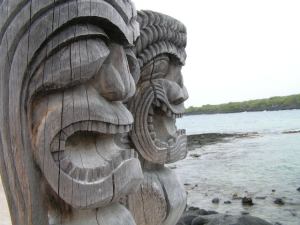 Pele Worship and Environmental Activism
Pele Worship and Environmental Activism
Worship of “Madame Pele” (USACE 1980) also can lead to direct oppositional action on behalf of the environment. The following excerpt from the U.S. Army Corps of Engineers’ (1979) Lava Flow Report suggests that citizens held off a potentially invasive maneuver due to their spiritual beliefs:
There are predictable social or cultural behavioral responses associated with volcanic activity in Hawai‘i. These often involve appeals to the supernatural, mainly Pele, the volcano goddess….During the recent volcanic eruption and lava flow in the Kalapana area of south Puna in 1977, there was widespread local opposition to any form of experimental waterbombing by the Army to determine the effects on the flow of lava. The degree of opposition finally led the Mayor of Hawai‘i County and the Governor of the State to informally request federal authorities to stop their experimentation. (Section 6.12, “Social Behavior”)
Contemporary Hawaiian history is full of belief-system clashes, mainly between indigenous cultural stances and the modernist tendency to see everything, all other species, as here for our use. For example, Mauna Kea, the oldest and largest volcano on the island, is the site of tremendous strife. Astronomers recognize it as one of the world’s greatest observatory sites, but many native Hawaiians see the presence of so many telescopes with their attendant buildings and easy-access roads as profaning a sacred place.[31]
What we should do is maintain the integrity of the mountain. The mountain is sacred. It is Wākea [the Creator sky god]. It is not Mount Joe. It is not Mount Kilroy. It is Mauna a Wākea. (Kanahele 1999)
Activist Pualani Kanahele describes how the observatories actually make native Hawaiians feel shame:
Sometimes we tend to abuse the things we have. …It’s our fault that it’s there. Because when they were being built, we didn’t say anything. And so, in our shame, we turn away knowing that that is a hewa, that is not supposed to be there. (Kanahele 1999)
The picture below illustrates the two worldviews in dialogue. The small structure next to the observatories is a heiau (temple), presumably built in an attempt to honor and assuage the spirit of the mountain.
Perhaps in the end the aims of the two groups are the same, to commune with a great mystery, yet the attitude of approach demonstrates a world of difference. Land-use protocols in traditional societies differ greatly from the United States’ current capitalist and wise-use models when areas considered particularly sacred are concerned.
Traditional Hawaiian conservation values…recognize that: A) not everyone was allowed to enter forested areas called wao akua (‘domain of the gods’), B) only those specialists who knew the religious protocol were allowed to enter these areas, and C) in gathering any resource there was a sense of giving back, either to the land itself or the ocean. (Tummons 1997)
The Puna Geothermal project, a plan touted by many environmentalists as a relatively clean method of gaining electric power for the island, was initially put on hold after the Sierra Club Legal Defense fund filed a lawsuit against the State of Hawai‘i (Forests.org, 1991). One reason was the native Hawaiian sentiment that stopping up Pele’s steam flow would be tantamount to stifling her expression. 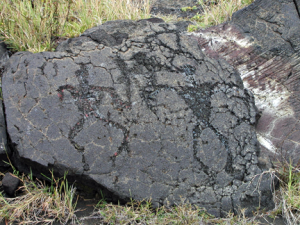 Many natives feel that the resultant absence of the goddess’ freely moving physical presence in their lives would literally kill their culture (USDOE 1996). This was taken as far as the U.S. Supreme Court, who decreed that “geothermal development does not interfere with religious freedom” (Boyd, Thomas, and Gill 2002, 18). Nevertheless, the project in Wao Kele forest was ultimately abandoned, and today, other geothermal energy projects pay a royalty fee to Native Hawaiians (Puna Geothermal Venture 2008).
Many natives feel that the resultant absence of the goddess’ freely moving physical presence in their lives would literally kill their culture (USDOE 1996). This was taken as far as the U.S. Supreme Court, who decreed that “geothermal development does not interfere with religious freedom” (Boyd, Thomas, and Gill 2002, 18). Nevertheless, the project in Wao Kele forest was ultimately abandoned, and today, other geothermal energy projects pay a royalty fee to Native Hawaiians (Puna Geothermal Venture 2008).
Whether they know it or not, those protestors were heeding ‘Olelo No‘eau 2100:“Maka‘u ka hana hewa I ka uka o Puna [Wrongdoing is feared in the upland of Puna, for it will bring the wrath of Pele]” (USDOE 1996, 247). Applying this ‘olelo to the pohaku curse phenomenon makes it clear that while the taking of stones from place to place is in itself a small thing, its attendant kapu teaches respect for the land—placing this story at the most vital center imaginable.
Such stories are not merely entertainment or quaint historical ciphers: they carry vital embedded, encoded messages. Just as the mele [holy chant]about Pele’s voyage contains the island’s volcanic history (making it literally a creation story in two voices), this ‘olelo,along with the pohaku [stone] and ohelo berry behavioral warnings, contain the story of our future survival. Such stories carry one message: If people are not in right relationship with the land (in this case, personified as Pele), big trouble will come. It is a most simple and true statement. As Friedrich Engels (1883, 289–90) trenchantly observed, long before global warming or persistent toxins, “In nature, nothing takes place in isolation….Let us not…flatter ourselves overmuch on account of our human conquest over nature. For each such conquest takes its revenge on us.” How radically would all of humanity’s lives be transformed if we all, especially our governments, followed this relational precept and acted accordingly?
Genius Loci
Each culture creates its unique stories, and these stories reciprocally influence the trajectory of that culture. The Pele beliefs described above show how cultural stories can affect collective behavior patterns, which in turn affect individual behaviors (whether conforming or resisting). But one thing is still missing in this, the initial point of origin: How place, the land we live on, creates, affects, and/or informs culture.
Place has an effect on the beings who live there. To give one simple example, polar bears are white. Bears are not white anywhere else; moving up to the North Pole and living in the snow is what made them adapt to be that way. In other words, that land’s genius loci fosters whiteness—the place altered them and their children in many ways, one of which is physically visible. Humans too are creatures embedded in a matrix of land, air, water, food, weather patterns and so forth, and environmental psychology shows how this complex system not only creates and allows our continuing physical existence but also affects our emotional states, the ways we think: our consciousness. Indeed, to some extent, the ecosystem, in conjunction with story, even creates human consciousness.
The orientation of island dwellers differs from those on larger continents. Islands’ boundaries being recognizably finite, life there is encompassed by mountain and sea; there is no new frontier territory to easily move on to. These factors create a consciousness state that Ritchie (1977, 188) calls “island mind.” Callicott’s (1994) survey of indigenous environmental ethics illustrates how there is, of course, no such thing as “the indigenous perspective.” Even while sharing similarities in emphasizing some form of right relationship with the more-than-human world, indigenous ecological ethics come in many, quite diverse, flavors. This is why it is all the more interesting to note how an ethic specific to indigenous Hawaiian culture regarding the ʻāina began to also arise in non-Hawaiians who reside there awhile, despite the fact that the cultural belief system they had been raised in was very different.
Therefore the question arises: Can it be that this ethic was created or taught by the land itself? That this particular state of consciousness or attitude is an evolutionary offshoot of that particular place, just as the white fleece of polar bears arose due to the unique conditions in the far North? I wonder whether it is possible that the consciousness alteration occurring over time in the people of Hawai‘i regarding pohaku is an example of the genius loci, or spirit of place, in action.
If so, the ramifications are crucial to discuss. For if the whole island were perceived as a living, conscious system—a philosophical stance that might sound airy-fairy to someone raised in an industrial growth society but which was common to our species for most of its existence on this planet—then humanity’s relationship to the land will radically shift.
Animism for the 21st Century
Reciprocal Transformation
Industrial-growth consumer culture combined with a mechanistic worldview has led to a norm that perceives the more-than-human world in purely utilitarian terms. Most contemporary Americans have been taught to perceive matter as dead, spirituality as viable only in transcendent realms away from the earth and the body, and consciousness as something that eventually arises only in so-called “higher” beings. This worldview leads to the perception that it is therefore fine to take whatever we want, especially if it brings financial profit.
 In contrast, reverence for land—ʻāina—is still prevalent in Hawai‘i, just as it still is in many places inhabited by native peoples. Imagine what it must have been like to be an original Polynesian voyager: how miraculous the sight of land would seem after precarious months on end cramped up with your neighbors and livestock in a canoe navigated by stars across the never-ending salt water of the Pacific, paddling through wild-waved storms and burning sun; literally sailing on a wind, ancestral knowledge, and a prayer toward small islands you hope will be there simply because old stories tell you it’s so. What are the odds against finding land, and finding it before your severely limited drinking water and food runs out? When you finally spotted the volcano on the horizon and then actually set foot on its solid, fertile land, how precious would it seem to you? Would you ever forget that feeling? Then imagine your people living for generations after that with the sight of fiery lava crawling down from that volcano, causing new land to be born right before your eyes, or sometimes devouring whole villages. With such an ongoing history, combined with islanders’ consciousness of limits, there is no wonder that reverence for this force; the land and its shifting primal forms of lava and stone, is still alive in Hawai‘i.
In contrast, reverence for land—ʻāina—is still prevalent in Hawai‘i, just as it still is in many places inhabited by native peoples. Imagine what it must have been like to be an original Polynesian voyager: how miraculous the sight of land would seem after precarious months on end cramped up with your neighbors and livestock in a canoe navigated by stars across the never-ending salt water of the Pacific, paddling through wild-waved storms and burning sun; literally sailing on a wind, ancestral knowledge, and a prayer toward small islands you hope will be there simply because old stories tell you it’s so. What are the odds against finding land, and finding it before your severely limited drinking water and food runs out? When you finally spotted the volcano on the horizon and then actually set foot on its solid, fertile land, how precious would it seem to you? Would you ever forget that feeling? Then imagine your people living for generations after that with the sight of fiery lava crawling down from that volcano, causing new land to be born right before your eyes, or sometimes devouring whole villages. With such an ongoing history, combined with islanders’ consciousness of limits, there is no wonder that reverence for this force; the land and its shifting primal forms of lava and stone, is still alive in Hawai‘i.
With this in mind, I now wish to speculate. Is it possible that the land “knows” and “feels” that respect from its people, and is therefore somehow more free to reciprocate? To explain: Corporations have been granted “personhood” as currently mandated by law, and it’s sobering to note that Bakan (2004) diagnosed their collective personality as sociopathic. If Gaia theory (Lovelock 1979) is correct, and as a mind exercise I now ascribe a similar “personhood” to the earth (as many indigenous people do), this planet could be seen as one large being, with humans as one part in the holonic network of her organs and cells. Going with this metaphor, if Gaia/Earth is treated like a cherished friend instead of mere storehouse and sewer (Macy 2000) for meeting peoples’ perceived material needs, the relationship becomes smoother, more balanced.
Experience has shown that once trust gets established in any human or human–animal relationship, each party feels safer and freer to reveal deeper layers of her soul to the other. In analogue, what if openly loving the land (or any nonhuman part of it) can actually “quicken” its consciousness, making it more likely to “speak” with people in a shamanistic way and to help us? Anecdotes about Pele turning lava flows away from the homes of her favorites (Kane 1996) certainly support this idea. If so, in a relationship with land as the people have traditionally had in Hawai‘i and if an animistic stance is posited of land as “awake,” the land can feel safe and will open to us more. This brings synchronous magical experiences and a sense of aloha[32] in the people,which in turn lead to people acting even more respectfully back toward the land. To use a whole systems term, a feedback loop becomes established, leading to mutually reciprocal transformation in a way that is ultimately beneficial to all.
For whatever reason, this mutual reciprocity seems to be blooming in Hawai‘i. People from Kansas are writing letters of apology to the goddess of the land. It is likely that the stone-takers, feeling guilty from exposure to the Pele’s Curse story and attendant mysterious bad luck, will act differently toward the island when next they visit. Isn’t it also possible that they will begin to treat their own home places with more awareness and respect as well? What would happen if the site of the Wal-Mart was perceived as just as inherently sacred as, say, Chartres Cathedral or Mt. Kailash?
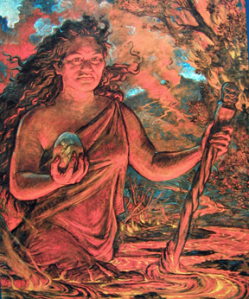 When nature is perceived as infused with spirit and agency, many currently destructive practices such as clear-cutting, strip mining, or dumping of nuclear waste no longer seem neutral, but appalling. And the story is key: a tree seen in terms of board-feet or dollar signs will be treated very differently than if considered to be an elder relative who offers shelter and food. When contemplating manufacturing, an animist, recognizing wood as the body of his friend, may ask, “Is that object I wish to make worth taking his life for?” Perhaps it is not, perhaps it is; at any rate, contemplating the question makes it likely that fewer unnecessary things will get made, and fewer of the earth’s “resources” unnecessarily depleted.
When nature is perceived as infused with spirit and agency, many currently destructive practices such as clear-cutting, strip mining, or dumping of nuclear waste no longer seem neutral, but appalling. And the story is key: a tree seen in terms of board-feet or dollar signs will be treated very differently than if considered to be an elder relative who offers shelter and food. When contemplating manufacturing, an animist, recognizing wood as the body of his friend, may ask, “Is that object I wish to make worth taking his life for?” Perhaps it is not, perhaps it is; at any rate, contemplating the question makes it likely that fewer unnecessary things will get made, and fewer of the earth’s “resources” unnecessarily depleted.
Our world would be very different if the dominant ideology involved reciprocal respect for all beings, beings in all sorts of bodies. In a small way, the stones of Hawai‘i may be helping this come to pass.
Which Story is Best?
While they will not accept human-constructed diversions of anticipated lava flows because such big earthworks are viewed as constituting an insult to Pele, the Hawaiian people do not simply bow down and submit to an unpleasant fate. Instead, many pray to dead relatives who have been dedicated to Pele to intercede with the goddess to direct an approaching lava flow away from their particular piece of land (USDOE 1980, Section 6.12). One can find numerous success stories wherein lava suddenly switches direction only a few yards from a house or town, via what to a modern sensibility seems like uncanny miracle.
Earlier I asked, is it possible that when we respect the land and its spirits to this degree, that it actually does respond in kind? If this question seems to ride a new-age fluffiness, I would only ask the reader for a moment to suspend the issue of “belief” altogether and instead contemplate the story’s effects. What would be the consequences of acting as if this is so? Or contemplate its opposite: what have been the consequences of civilization’s acting as if it were not? Most importantly, which is preferable? Which leads to more long-term survival, sustainability, and happiness?
 Such indigenous models of relationship have been successful for tens of thousands of years. In contrast, human behavior under the modernity alternative, especially the mere 200 years since the Industrial Revolution began, has brought the planet to the brink of the sixth great extinction[33] (Eldredge 2005). The currently prevalent relationship to land, based mainly on maximizing profits for corporations and pretending to be divorced from the nest of relationships in any healthily reciprocal way, is leading to humanity’s self-destruction. Hawai‘i is rapidly becoming the endangered species capital of the world (Bishop Museum 2008). If indeed thoughts do ultimately create the world, the healthy choice is clear. Hawai‘i contains the necessary elements for a provocative test case: the potential for mainstream adoption of an existing animistic worldview to catalyze new protective action.
Such indigenous models of relationship have been successful for tens of thousands of years. In contrast, human behavior under the modernity alternative, especially the mere 200 years since the Industrial Revolution began, has brought the planet to the brink of the sixth great extinction[33] (Eldredge 2005). The currently prevalent relationship to land, based mainly on maximizing profits for corporations and pretending to be divorced from the nest of relationships in any healthily reciprocal way, is leading to humanity’s self-destruction. Hawai‘i is rapidly becoming the endangered species capital of the world (Bishop Museum 2008). If indeed thoughts do ultimately create the world, the healthy choice is clear. Hawai‘i contains the necessary elements for a provocative test case: the potential for mainstream adoption of an existing animistic worldview to catalyze new protective action.
The animistic Hawaiian concept of mauli-ola, which Heighton thinks still forms a basis for understanding Hawaiian behavior, means “the essence of life is present in every part of the world” (Howard 1974, 155). The pohaku phenomenon not only illustrates mauli-ola in action, but also opens a large philosophical question about the nature of consciousness itself. If we posit that instead of arising at the very end of one linear evolutionary chain, consciousness actually lies at the ground of being and is therefore present in everything, with each species and individual being representing a unique type of its flowering, the worldview about (and attempted management of) any whole living system takes on an expansive, numinous and participatory dimension.
Cultural Story as Pedagogy
Stories and experiences like those portrayed in this chapter can be employed as pedagogical (or andragogical) method. The pohaku event sequence in Jerry’s semester offered teachable moments for the students, and for the faculty as well. In subsequent semesters on the island, I would share Jerry’s story with new students, highlighting that group’s various shifts in worldview consciousness. I would then invite these new students to engage in a similar dance with both this land’s native cultural stories and the belief stories they were raised with, encouraging them to hold both simultaneously instead of trying to choose one narrow “truth” to constantly dwell in. This proved to be an effective way for us as educators to leverage such experiences into a teachable story, an exercise that helped students enjoy intellectual ambiguity and, ultimately, to wear their paradigms more lightly.
Combined with other elements of place-based environmental education, Jerry’s tale and its components of humor and horror (always engaging storytelling genres) also had the effect of opening up new groups of students to the nuances of indigenous ecological relationship.
One such student, Stacy Scudder, reflected in her final paper on the similarities between native Hawaiian philosophy and the ecophilosophy of Deep Ecology. In a nutshell, the principles of Deep Ecology propound that the well-being of all life, diverse human and nonhuman alike, has intrinsic value in itself, independent from its usefulness for human purposes. Ideologically putting this into practice mainly involves replacing an increasingly higher material standard of living with appreciation of a higher quality of life; a “profound awareness of the difference between big and great” (Devall and Sessions 1985, 70).
“Hawaiians harbor a deep reverence and connection for land. This is manifested in kapus regarding sacred sites such as mountain tops, in offerings left at heiaus and in the personification of rocks (Pele), plants (taro as brother), and animals (as aumakua). Western perceptions seem to focus on quantitative characteristics of the natural world. Relationships are often anthropocentric, where value is determined by usefulness to humans in regards to scientific, consumptive or industrial measures. Native Hawaiians often refer to the energy of the land and the importance of having a reciprocal relationship with it. Food is honored with kind words and restrictions regarding treatment (menstruating women are kapu, as is walking over it). Hawaiian traditions seem to possess an inherent deep ecological philosophy.” (Scudder 2003)
While Stacy’s comparative paper focused on the cultural effects of paradigms, her classmate Kara McCrimmon considered the psychological effects. In Kara’s paper, the reader can see how exposure to animistic ideas led her to experience a shift in the definition of “self” from autonomous individual to part of a whole living collective system. It is interesting to note that paradoxically, this resulted in her feeling the need to take more individual responsibility:
“The dominant western philosophies seem to teach independence, individuality, and the opportunity for the strong and willful person to create and define his or her own reality. I remember reading many books in high school that had this as its theme. I hardly recall reading or being taught the philosophy that everything is connected to everything else. Yet when we take into account the notion that everything is connected to everything else, the notion of the individual entity changes. No longer is the individual a singular entity struggling against the fabric of the universe. The individual becomes a unique thread in the universal tapestry. Hence, the actions of one individual may lend strength to the tapestry, or may cause the weave to unravel. When a person recognizes that everything is connected, that every action has some corresponding response, the definition of self must honestly experience and to include everything within the range of influence for that individual.” (McCrimmon 2003)
Each semester, my students were profoundly altered by their time in Hawai‘i, both in terms of exposure to ideas outside of the dominant paradigm and also by simply being there together, living outside on that land. Their relationships with Pele and the ‘āina [land, or literally, “that which sustains us”] changed over the course of the time that they resided in Hawai‘i, as did the attitudes of other long-term residents who participated in my study. They moved toward more respectful attitudes, a sense of spiritual import in the everyday, and more ecologically sustainable behavior.
The same trajectory begins to appear in the letters of repentant stone-taking tourists. It seems possible that those who experienced a run of bad luck and began to feel guilty about taking the stones will act differently toward the island the next time they visit. Perhaps this better eco-relational behavior will also spread to include their own home places. As more and more individuals shift toward caring sustainable behavior, the culture and its supporting structures will shift as well. In this way, this land being composed of all lava rock, the stones served as teacher.
From Ownership to Belonging
Over the past 40 years, NASA’s glorious photos of our singular blue planet as seen from space have been priming humanity’s collective psyche to inhabit an enlarged form of “island consciousness”—a greener variation of Buckminster Fuller’s “spaceship earth.” If nations really begin to recognize that Earth is one closed, finite system and then act like it, everything will change.
The modernity experiment has clearly failed: no industrial growth civilization is currently living in ecologically sustainable relationship. Thus, the “structural printout from the cognitive map of islanders” (Ritchie 1977, 187) continues to be an important key to survival. If a place becomes spoiled on a large continent, there are other places to go; new territories to move into just over the next ridge. Break camp; move on. However, this is not possible on an island, so problems must be dealt with. The name chosen for the AEI semester in Hawai‘i, “Microcosm of Earth,” reflected this need for island consciousness to be applied to our planet as a whole. We live on a small, fragile island of life floating in a vast, cold vacuum of space, and many are only now waking up to the fact that humans must attend to the health of our soil, water, and air as such.
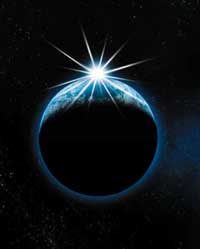 More relational cultures hold clues to structures for greater sustainability that industrialized countries might follow. For example, the current trend towards localism as an alternative to global trade echoes, and could look to, the old Hawaiian ahupua‘a system. But people will find it difficult to weather such changes unless they are accompanied by a shift in consciousness as well, one which shows why such changes are beneficial. For us to survive as a species and a planet, people in the Global North must collectively outgrow the ideology of the “dead-matter universe” in which only humans possess consciousness, as this idea has led to acting as though our kind are separate from, and better than, the rest of the living matrix of beings. Many people and groups across the globe are of course keenly aware of the urgency of our shared situation, and are currently working on making change from various angles. Exposure to the beauty, harmony, and enduring value of indigenous ways of relationship with the natural world; to approaching land as teacher, offers one promising avenue to success.
More relational cultures hold clues to structures for greater sustainability that industrialized countries might follow. For example, the current trend towards localism as an alternative to global trade echoes, and could look to, the old Hawaiian ahupua‘a system. But people will find it difficult to weather such changes unless they are accompanied by a shift in consciousness as well, one which shows why such changes are beneficial. For us to survive as a species and a planet, people in the Global North must collectively outgrow the ideology of the “dead-matter universe” in which only humans possess consciousness, as this idea has led to acting as though our kind are separate from, and better than, the rest of the living matrix of beings. Many people and groups across the globe are of course keenly aware of the urgency of our shared situation, and are currently working on making change from various angles. Exposure to the beauty, harmony, and enduring value of indigenous ways of relationship with the natural world; to approaching land as teacher, offers one promising avenue to success.
Story can serve as a technology of attunement to different worldviews such as the animistic, potentiating a shift at the macro-level or societal consciousness. In particular, native eco-stories with their spiritual components debunk the outmoded modernist conceit that the animistic is merely imaginal—especially when they are also personally experienced. But they cannot simply be appropriated: Hawai‘i is not the same as Nebraska, and the stories of each place must be allowed to sing for themselves.
The world situation urgently calls for a shift in relational stance toward land from the currently dominant paradigm of ownership to a more indigenous stance of belonging, the recognition that humans are actually in the body of the living earth and are only one of its beloved parts. Animistic stories activate awareness of the sacred bond of connection that the alienated people of the Global North still have with other animals, plants, and even stones. This allows these beings to serve as partners in dialogue, teaching us to remember what we’ve forgotten. Benefits of this shift include a growing sense of wonder and appreciative belonging, and a more sustainable way of life where people are not only aware of, but graciously accepting of, limits. In essence, it equals a movement toward pono: a truly responsible, symbiotically reciprocal, and deeply spiritual relationship with the more-than-human world.
Pule Ho‘opua [Ending Prayer]
E Pele e! He akua o ka pohaku enaena, Ele‘ele kau mai!
[O goddess of the burning stones, Let awe possess me!][34]
*
***************************************************************************************************
This essay was first published in
So What? Now What? The Anthropology of Consciousness Responds to a World In Crisis
edited by Matthew C. Bronson and Tina R. Fields
UK: Cambridge Scholars Press, 2009 (pp. 317-359).
Published here with the permission of Cambridge Scholars Publishing.
For more info or to get involved in discussing this & other interesting issues, please comment below!
To purchase a copy of the book (which contains many excellent essays), click the picture.
*************************************************************************************
References
Abbott, Isabella, and Cindy Hunter. 2003. Limu: Religion Made Them Important. Building Modern Community Connections to Reefs. Papa & Wākea Lecture Series, Waikiki Aquarium, April 24.
Achterberg, Jeanne. 1985. Imagery in Healing: Shamanism and Modern Medicine. Boston, MA: Shambhala.
Bakan, Joel. 2004. The Corporation: The Pathological Pursuit of Profit and Power. New York: Free Press.
Bishop Museum. 2008. Hawai‘i Biological Survey. http://hbs.bishopmuseum.org
Boyd, Tonya L., Donald Thomas, and Andrea T. Gill. 2002. Hawai‘i and Geothermal: What Has Been Happening? GHC (Geo-Heat Center) Bulletin, September.
Bricking, Tanya. 2003. Mystic Wrath of the Lava Rock Lands in This Reporter’s Lap. Honolulu Advertiser, January 28. Available at: http://the.honoluluadvertiser.com/article/2003/Jan/28/il/il06a.html
Callicott, J. Baird. 1994. Earth’s Insights: A Multicultural Survey of Ecological Ethics from the Mediterranean Basin to the Australian Outback. Berkeley, CA: University of California.
Campbell, Joseph. 1972. The Hero with a Thousand Faces. Bollingen Series, no. 17. Princeton, NJ: Princeton University Press.
Capra, Fritjof. 1996. The Web of Life. New York: Anchor.
Chalfant, Anne. 2003. Returned Lava Rocks Fill a Garden to Appease a Goddess in Hawai‘i. Salt Lake City Tribune, January 12. http://www.sltrib.com/2003/Jan/01122003/sunday/18774.asp
Cloutier, David. 1980. Spirit Spirit: Shaman Songs. Providence, RI: Copper Beech Press.
Coomaraswamy, Ananda Kentish. 1997. The Door In The Sky: Coomaraswamy on Myth and Meaning. Princeton, NJ: Bollingen.
DellaFlora, Anthony. 2000. Cultures Collide Over Naming God. Albuquerque Journal, Arts & Culture, December 3. http://www.accessmylibrary.com/coms2/summary_0286-1912232_ITM
DeLoria, Vine. 1999. For this Land: Writings on Religion in America. New York: Routledge.
Devall, Bill, and George Sessions. 1985. Deep Ecology. Layton, UT: Gibbs M. Smith.
Eldredge, Niles. 2005. The Sixth Extinction. American Institute of Biological Sciences. http://www.actionbioscience.org/newfrontiers/eldredge2.html
Emerson, Nathaniel. 1909. Unwritten Literature of Hawai‘i: Sacred Songs of the Hula. Bureau of American Ethnography Bulletin 36. Rutland, VA: Charles Tuttle, 1965.
Engels, Friedrich. 1883. Dialectics of Nature, ed. Clemens Dutt. New York: International, 1940.
Faithorn, Lisa. 1992. Three Ways of Ethnographic Knowing. ReVision 15 (1): 23–7.
Fields, Tina. 2004. ‘Celtic Shamanism’: Pagan Celtic Spirituality. In Shamanism: An Encyclopedia of World Beliefs, Practices, and Culture, ed. Mariko Walter and Eva Fridman, 469–78. Santa Barbara, CA: ABC-Clio.
Forests.org. 1991. Wao Kele O Puna vs. Waihee. Hawai‘i Rainforest Campaign Update 11/16/91. forests.org/archive/america/hawaii2.htm
Global Footprint Network. 2008. Footprint Basics—Introduction; World Footprint; Earth Overshoot Day 2008 press release. http://ecofoot.org
Greenway, Robert. 1995. The Wilderness Effect and Ecopsychology. In Ecopsychology: Restoring the Earth, Healing the Mind, ed. Theodore Roszak, Mary E. Gomes, and Allen D. Kanner, 122–35. San Francisco: Sierra Club.
Gutmanis, June. 1991. Pohaku: Hawaiian Stones. Laie, HI: Brigham Young University-Hawai‘i, Institute for Polynesian Studies.
Hanh, Thich Nhat. 1975. The Miracle of Mindfulness. Trans. Mobi Ho. Berkeley, CA: Parallax Press.
Harvey, Graham. 2006. Animism: Respecting the Living World. New York: Columbia University Press.
Howard, Alan. 1974. Ain’t No Big Thing: Coping Strategies in a Hawaiian-American Community. Honolulu: East-West Center, University of Hawai‘i.
Kamakau, Samuel Manaiakalani. 1866. Ka Po‘e Kahiko [The People of Old]. Special Publication 51. Trans. Mary Kawena Pukui. Honolulu: Bishop Museum Press, 1964.
Kanahele, Pualani. 1999. Mauna Kea. In Wākea—Ancestor of the First People of This Land. Live Educast from ‘Iolani Palace, Honolulu, HI, December 19.
Kane, Herb Kawainui. 1996. Pele: Goddess of Hawai‘i’s Volcanoes. Captain Cook, HI: Kawainui Press.
Kape‘ahiokalani, Maenette, Padeken Ah Nee Benham, and Ronald H. Heck. 1998. Culture and Educational Policy in Hawai‘i: The Silencing of Native Voices. Mahwah, NJ: Lawrence Erlbaum.
Kelly, Marion. 1980. Majestic Ka‘u: Mo‘olelo of Nine Ahupua‘a. Report 80–2. Honolulu, HI: Dept. of Anthropology, Bishop Museum.
Kirch, Patrick Vinton. 1985. Feathered Gods and Fishhooks: An Introduction to Hawaiian Archaeology and Prehistory. Honolulu: University of Hawai‘i.
Lovelock, James. 1979. Gaia: A New Look at Life on Earth. Oxford, UK: Oxford University Press.
Macy, Joanna. 2000. The Great Turning (Interview by Sarah Van Gelder). Yes! A Journal of Positive Futures, Spring. http://www.yesmagazine.org/article.asp?ID=333
Malo, Davida. 1996. Ka Mo‘olelo Hawai‘i [Hawaiian Traditions]. Trans. Malcolm Naea Chum. Honolulu, HI: First People’s Productions.
Maly, Kepa. 1999. Mauna Kea Science Reserve and Hale Pohaku Complex Development Plan Update: Oral History and Consultation Study, and Archival Literature Research. Ahupua‘a of Ka‘ohe (Hamakua District) and Humu‘ula (Hilo District), Island of Hawai‘i. Report for Group 70 International, Honolulu. Hilo, HI: Kumu Pono.
McCrimmon, Kara. 2003. Final Reflective Evaluations: Environmental Psychology. Student paper for Lesley University’s Audubon Expedition Institute.
Meyer, Manulani Aluli. 2003. Ho‘oulu: Our Time of Becoming. Hawaiian Epistemology and Early Writings. Honolulu, HI: ‘Ai Pohaku.
Orr, David. 1992. Ecological Literacy: Education and the Transition to a Postmodern World. Albany:SUNY Press.
Pollan, Michael. 2001. The Botany of Desire: A Plant’s-Eye View of the World. New York: Random House.
Polynesian Voyaging Society. 2008. About the Polynesian Voyaging Society: Brief History of the Polynesian Voyaging Society. http://pvs.kcc.hawaii.edu/aboutpvs.html#briefhistory
Pukui, Mary K., E. W. Haertig, and Catharine A. Lee. 1972. Nānā I Ke Kumu: Look to the Source, vols. 1–2. Honolulu, HI: Hui Hanai.
Puna Geothermal Venture. 2008. Do Native Hawaiians and environmentalists oppose geothermal? http://www.punageothermalventure.com/FAQS/20/do-native-hawaiians-and-environmentalists-oppose-geothermal
Ritchie, James E. 1977. Cognition of Place: The Island Mind. Ethos 5 (2) : 187–94.
Scudder, Stacy. 2003. Final Reflective Evaluations: Environmental Psychology. Student paper for Lesley University’s Audubon Expedition Institute.
Smith, Brad. 2000. Grandma Brought Black Sand Home. In Hawai‘i’s Best Spooky Tales, vol. 4, ed. Rick Carroll, 112–4. Honolulu, HI: Bess Press.
Snopes.com. 2007. Pele and Lava Rocks: Rock Hounded. Urban Legends Reference Pages. http://www.snopes.com/luck/pele.asp
Ting, Yu Shing. 2001. Leave the Rocks Alone. In Hawai‘i’s Best Spooky Tales, vol.5, ed. Rick Carroll, 111–6. Honolulu, HI: Bess Press.
Tummons, Patricia. 1997. Claim of Traditional Right to Hunt is Disputed by Hawaiian Cultural Experts. Environment Hawai‘i 7: 7.
U.S. Army Corps of Engineers (USACE). 1979. Hilo Lava Flow Control: Draft Interim Report and Environmental Impact Statement. Washington, DC: USACE Honolulu District.
U.S. Army Corps of Engineers (USACE). 1980. Lava Flow Control: Island of Hawai‘i. Review Report and Environmental Impact Statement. Washington, DC: USACE Honolulu District.
U.S. Department of Energy (USDOE). 1996. Native Hawaiian Ethnographic Study for the Hawai‘i Geothermal Project Proposed for Puna and S.E. Maui. Prepared by Jon K. Matsuoka, Davianna Pomaiki‘i McGregor, Luciano Minerbi, Cultural Advocacy Network for Developing Actions (CANDO), Pualani Kanahele, Marion Kelly, Noenoe Barney Campbell, L.D. Trettin, J.W. Saulsbury, and Energy Division ORNL Subcontract Managers. Oak Ridge, TN: Contract DC-AC05-96OR22464.
U.S. Public Law 103–150. 1993. Apology Resolution. 103d Congress Joint Resolution 19.
Valenzuela, Hector, and Dwight Sato. Taro Production Guidelines for Kauai. University of Hawai‘i Extension. http://www.extento.hawaii.edu/Kbase/reports/taro_prod.htm
Volcano Gallery. 2002. Lava Rock Return to Hawai‘i: Photo Library 2002. http://www.volcanogallery.com/lavarock2002.htm
Footnotes
[1] This chant can be found in Emerson (1909); however, I learned it aurally from my graduate student Kara McCrimmon, who learned from the singing of “Aunty Nona” Beamer when we visited her home in Hilo, Spring 2003. I want to take this moment to say Mahalo Nui Loa [greatest thanks, gratitude, and respect]to all of the Hawaiian people whose words and insights informed this paper, and to the spirit of the ʻaina .
[2] Terry Reveira and Ted Eriksson [pseud.]. Two separate interviews by author. March 31, 2003. Hawai‘i Volcanoes National Park.
[3] Reveira. Interview by author. March 31, 2003. Hawai‘i Volcanoes National Park.
[4] Pseudonym; all other names and events are true.
[5] Janet Richardson LeValley. 1995. E-mail message to author.
[6] Pahoehoe is smooth, ropy sort of lava that looks a bit like long hair, as opposed to a‘a that is sharp, clinkery, jagged bits. As a mnemonic aid, we joke that if you step on the latter barefoot, you’ll get horribly cut up and likely yell “Aaa! Aaa!”
[7] Reveira. Interview by author. March 31, 2003. Hawai‘i Volcanoes National Park.
[8] Pers. comm. March 23, 2000. Hawaiian Volcano Observatory,
[9] Besides land, the word ʻāinacan also mean sexual intercourse or a meal.
[10] Howard’s book reports details of their collaborative study.
[11] This caring seems especially important for stones being used as colleagues in some sense, and signifies the deep reciprocity necessary for human/stone and other cross-species relationships.
[12] Momi Subiono. Pers. comm. 2003. Amy B. Greenwell Ethnobotanical Garden, Honaunau, HI. Howard (1974, 156) and Kelly (1980, 33–6) say that such stones are named ’ili ‘ili hānau or “birth stones” because they are believed to visibly reproduce themselves, producing small pebbles from their bodies under proper conditions. They have also been seen to increase in size.
[13] Kia Fronda. Interview by author. 2003. Waipio Valley, HI.
[14] Of nearly two dozen respondents, only one did not share these sentiments: a retired scientist conducting tours at the National Energy Laboratory of Hawai‘i located on the Kona side of the island, far away from the currently active volcano. He said he “hasn’t been indoctrinated into” the belief of Pele, citing his suspicion of superstition as the reason. “In fact,” he quipped with a deadpan expression, “I don’t even like to be around superstitious people. They bring me bad luck.” But in one way or another, everyone else noted the mana of the stones and the island.
[15] While this term “haole” is commonly used today to refer to people of European ancestry, it carries an insulting undertone as it literally means “without spirit.”
[16] According to Gutmanis (1991, 23), this is the boulder known as Hupeloa, located on Kolekole Pass in Oahu.
[17] Interview by author. April 8, 2003. Applies to all Johnston-Kitazawa quotes in this section.
[18] Pidgin slang term for what mainlanders call “goosebumps,” the physical manifestation of supernatural fright or awe-inspiring mystical experience.
[19] Interview by author. April 12, 2003. Mauna Lani Hotel, HI. For all Akaka quotes in this section.
[20] Interview by author. April 1, 2003. Hilo, HI. For all Beamer quotes in this section.
[21] Necklace, usually made of natural materials, given as a sign of affection.
[22] Interview by author. April 19, 2003. Waipi‘o Valley, HI. For all Fronda quotes in this section.
[23] Valenzuela and Sato (n.d.), verifying my own observations working in Kia Fronda’s taro fields, Waipi‘o Valley HI, 2002 and 2003.
[24] Native beach dwellers and sovereignty activists. Pers. comm. 2001–2003. They refuse to call themselves “homeless,” feeling strongly that despite what the colonizing usurpers think, the entire island chain is their home.
[25] Terry Reveira. Interview by author. March 31, 2003. Hawai‘i Volcanoes Nat’l Park.
[26] Pseud. Interview by author. March 31, 2003. Hawai‘i Volcanoes Nat’l Park. For all Eriksson quotes in this section.
[27] It’s my understanding that the term kahuna more literally translates as “master” as in mastery of a skill or trade, with spiritual leadership being one among many.
[28] I define sustainability as the ability to provide for our current needs without compromising the ability of future generations of any species to do the same.
[29] Momi Subiono. Pers. comm. February 20, 2003. Amy B. F. Greenwell Ethnobotanical Gardens, Honaunau, HI.
[30] For an excellent and engaging book on human/plant relationships from the plant’s point of view, read The Botany of Desire (Pollan 2001).
[31] Kanahele 1999; Maly 1999; my own observations of native protests at the foot of the mountain 2000–2003.
[32] Aloha is a greeting encompassing “hello,” “goodbye,” and “love”; as well as a word connoting the generously loving good-will toward all beings that characterizes the best way of life in the Hawaiian Islands.
[33] Back in 1993, Harvard biologist E.O. Wilson estimated that the planet is losing 30,000 species per year—around three species per hour. The rate is even more severe now.
[34] Educational illustration at the Thomas A. Jaggar Museum in Hawai‘i Volcanoes National Park. April 2003.
____________________________________________________________________
***
Reward for sticking this out till the end:
One of the best warning signs ever.

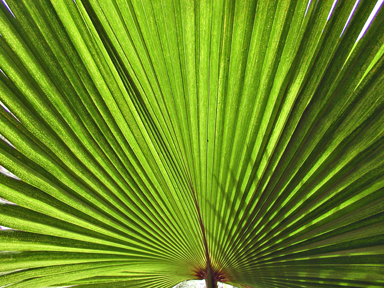

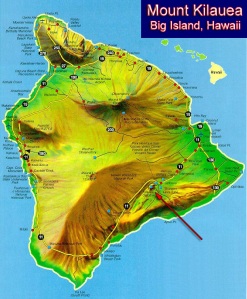
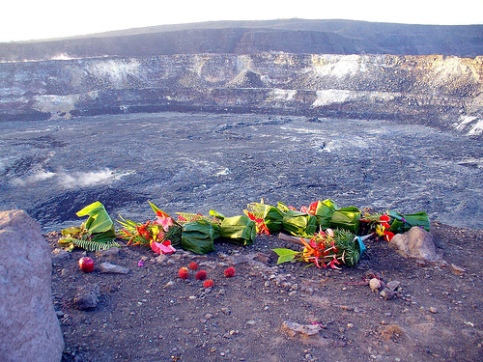

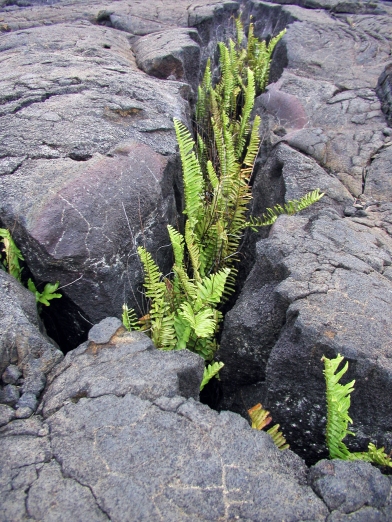

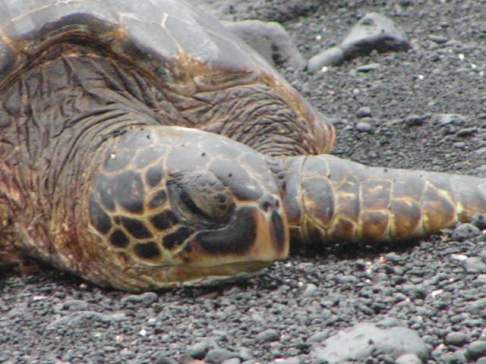
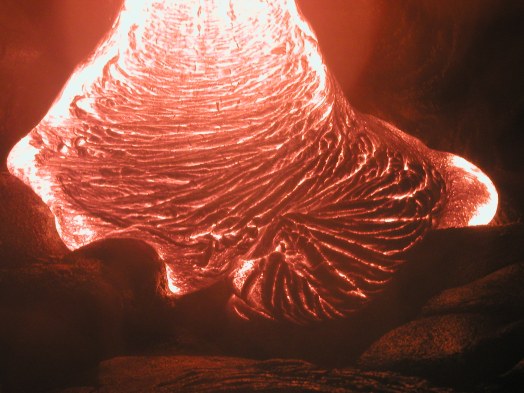

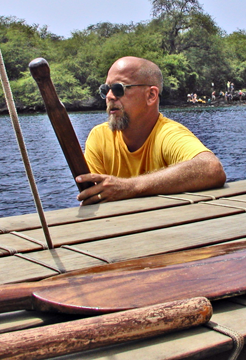

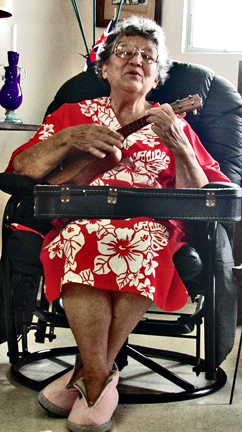

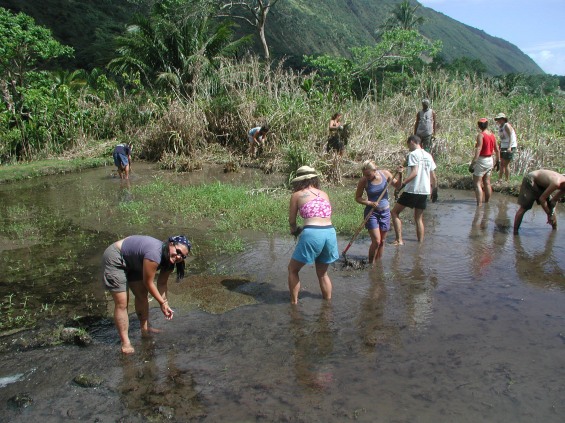
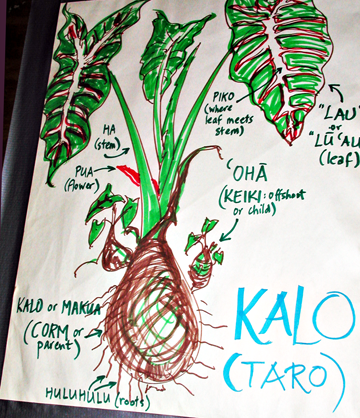



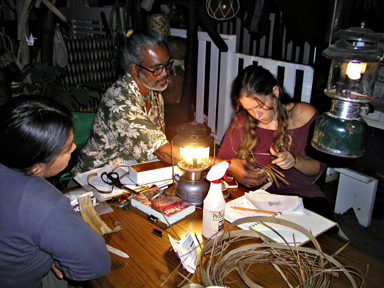

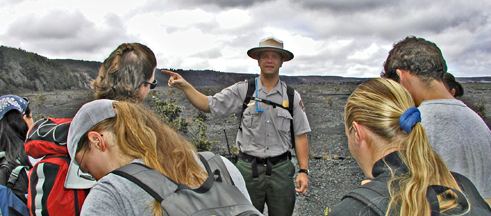

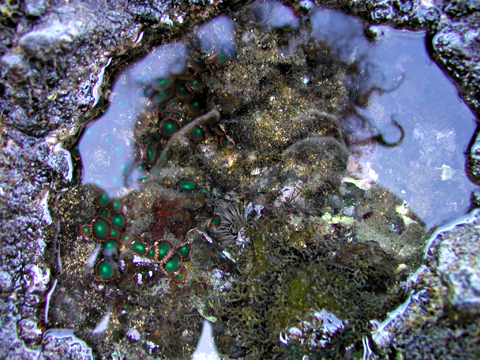








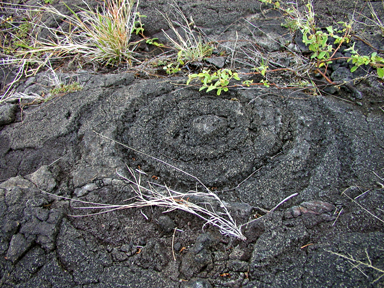



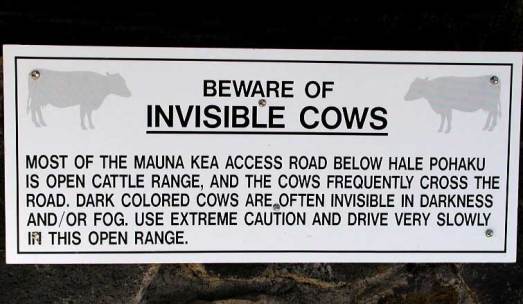






You go girl! An inspiration for me to create and go live with my own Web site.
And spread that ecopsych word!
Candice
This has actually sparked up an idea in my mind. This really is a superb weblog article.
A actually great submit by you my friend.
Wow! This can be one of the most beneficial blogs we have ever come across on this subject. Basically Magnificent.
FYI, I advise you remove that bit with Kia Fronda. I find his words “Modern people don’t usually think to offer, only take take take” highly ironic and hypocritical as Mr. Fronda took the virginity of a young child. If you don’t believe me, check the Hawaii Sex Offenders Registry for “TRANQUILINO FRONDA”
Gau, I did hear about this, and feel very sad for everyone involved. It apparently happened the year after my last meeting with Kia.
People are complex. One beneficial action does not necessarily excuse another one that caused harm. But neither does a harmful action devalue or negate another that was helpful, generous, kind. My own experience with Mr. Fronda was inspiring, so I will let that stand as written for others who read this to benefit from. I will also let your words stand here for readers to see. Aloha –
A great Man and One many consider God says: Cast the first stone each of you who do no wrong. May He forgive Kia as He forgives me.
I simply want to tell you that I am very new to blogging and site-building and seriously savored you’re web site. You really have really good writings.
Excellently written.
avtor molodec!
[…] To read more about spirituality involving rocks, see my book chapter Kumu Pohaku (Stones as Teachers). […]
Just check out at this particular article about’American Indians Learn Native Hawaiian Ancient Healing Practices on The island of oahu Retreat’ just proves how Ho’oponopono is becoming much more recognized!
Fantastic read!
remember the prayer…..that says it all
Pule Ho‘opua [Ending Prayer]
E Pele e! He akua o ka pohaku enaena, Ele‘ele kau mai!
(O goddess of the burning stones, Let awe possess me!)
Excellent items from you, man. I like what you’re saying and the way in which you assert it. You are making it enjoyable and you still keep it smart. I cant wait to read far more from you. This is really a wonderful website.
You can certainly see your expertise within the paintings you write. The world hopes for more passionate writers like you who aren’t afraid to mention how they believe. Always go after your heart.
Thank you very much!
————————————————
I’ve enjoyed reading it and pondering the many points you make.
Right here is the perfect site for anybody who wishes to understand this topic.
You understand a whole lot its almost tough to argue with you (not that I personally would want to…HaHa).
You certainly put a brand new spin on a subject which has been
written about for many years. Excellent stuff, just excellent!
This website is great b147f40fae68217610f64fa1a57c6dac
[…] Versión original en inglés también disponible, ilustrada, en sitio web Indigenize, https://indigenize.wordpress.com/about/spiritual-ecopsychology/kumu-pohaku-stones-as-teachers/ […]
[…] https://indigenize.wordpress.com/about/spiritual-ecopsychology/kumu-pohaku-stones-as-teachers/ […]